#the empire fell to infighting
Explore tagged Tumblr posts
Text
Ah, here we are again. After sitting through all that jedi fell to the empire because they did things wrong rhetoric, I am now sitting through the mandalore fell to the empire because Satine weakened it with her weak weak pacifism or Bo weakened it with her mistakes-
I’m not playing this blame game. I get that this is somewhat invoked by Bo Katan herself with her multiple speeches about the self-defeating nature of mandalorian infighting, and it’s deeply resonant because of her own history of being part of the problem, and it’s deeply resonant because they are fighting amongst themselves now, however-
It’s noticeable that despite that, her brief description of what happened when they lost the war is curiously devoid of mandalorian infighting. The opposite even- when they fought the empire, they may have been the most united they’d been in a long time. They appear to have just... lost. They weren’t betrayed by a mandalorian in the end, they were betrayed by Moff not honoring their agreement. So there.
And as for Satine? I’m guessing a certain subset of fans have a vision of what Mandalore would have been like without her dastardly ways, that it would have been a shining military power capable of holding it’s own against anyone- that’s a pie in the sky, obviously. The reality is that Satine didn’t inherit a gloriously strong world she dismantled bit by bit, the mandalore she was chosen to lead was a severely depopulated and fractured fractured society that killed more than half it’s own in bloody civil war, a world moreover that lacked crucial resources like, for example, food, it’s ecosystem being long since ruined, reliant on imports and/or raiding. Her administration rebuilt those cities, that infrastructure, those schools, that trade, after war had left rubble and corpses in it’s wake. Mandalore without her most likely would have looked much like it did after she was murdered in a coup: infighting, not any less vulnerable to outside attack. We know ‘traditional’ warrior mandalorians could lose to the empire; that’s exactly what happened.
But it’s not like her Mandalore would have survived by virtue of being virtuous either! I mean, the jedi didn’t, the Lasat didn’t, the nightsisters didn’t, Alderaan didn’t, lots of people got wiped out. And anyway, that would rather defeat the purpose she was arguably introduced into the narrative for, back when mandalorians didn’t have quite such a whole mythos of their own, and her and mandalore’s role was mostly to do with being a foil to Obi Wan (and anidala. many hats.) and the jedi. After all, the question of should the jedi have been neutral in the war, should they have been pacifists whose solutions were diplomatic only, etc, was a common one both in and out of universe, and the story, imo, answers it with: different story, same ending. Hence, Satine is murdered by the Sith, and there are clone troops in the streets of Mandalore when the republic graduates into empirehood. If Palpatine had fallen then, the empire not solidified, had things worked out, Mandalore might well have been able to rebuild from there, again.
Whose fatal flaws caused what in that tragedy were the same as for the rest of the galaxy. By a quirk of destiny, it all ended up resting on the shoulders of one Anakin Skywalker and his critically endangered decision making capabilities.
563 notes
·
View notes
Text
Digimon & mythology: the Olympos XII
One of the most underused major groups of Digimon in my opinion is the Olympos XII. As the name suggests, they are based on the twelve Olympian gods of ancient Greece and their Roman successors, the Dii Consentes. While the older lineup of the Olympoans and the Dii Consentes used an equal number of gods and goddesses, the goddess Hestia/Vesta was later replaced by Dionysus/Bacchus as her worship fell out of favor and his became popular. Digimon uses the lineup that includes Dionysis/Bacchus and excludes Hestia/Vesta. The Olympos XII also use the Roman names for the gods, though they take inspiration from both cultures' interpretations, as well as original ideas. In fact, some of the Olympos XII seem deliberately designed to be unlike their mythical counterparts.
The Olympos XII rule their own Digital World called Digital World: Iliad, which is hosted on a different server than the mainstream Digital World ruled by the computer god Yggdrasil. While the two worlds rarely interact, Yggdrasil is keeping its eye on Iliad and it is said that one day the Royal Knights of Yggdrasil's server and the Olympos XII will confront each other. Whether that confrontation will be violent or peaceful remains to be seen. Iliad has its own computer god named Homeros, who is very different from Yggdrasil. While Yggdrasil seeks to rule its Digital World, Homeros believes in absolute freedom and left Iliad in a state of anarchy. The Olympos XII rose up to establish order and justice in defiance of Homeros's anarchy. While some media depicts Homeros as an enemy of the Olympos XII, others imply it has some authority over them.
One thing to note before covering the members of the Olympos XII is that the Greek and Roman myths were not set in stone. Beliefs changed and ideas were absorbed from neighbors. Different groups of people also interpreted the gods differently. For example, the Athenians generally had a negative view of Ares and depicted him as a brutal monster, the but Spartans and Romans had a much more positive view on him. The Greeks and Romans also had a practice called interpatio graeca/interpatio romana where they would absorb the gods of other cultures into their own pantheons, often by claiming that the foreigners' gods were actually the same gods under different names. This was especially common in Rome given how diverse the empire was. An easy way to avoid religious infighting was to declare that everyone is actually worshipping the same gods under different names. Different sects would also worship different aspects of the same god, which were sometimes given their own titles. For example, one group of Romans might worship Jupiter in his aspect as the bringer of storms where another may worship him in his aspect as a leader. This is all to say that the mythologies that the Olympos XII draw from are very diverse and were constantly changing and whatever I say about mythology here can be both supported and refuted by multiple sources, all equally valid.
Warning that some of the Olympos XII members have some of the most explicit "sexymon" designs in the franchise. Some of the art below may be NSFW.
The founder and leader of the Olympos XII is Jupitermon. It founded the Olympos XII to bring justice to the Digital World: Iliad and presides over weather as the god of the sky. It acts as a dispassionate judge who declares acts as being either good or evil, then metes out divine judgement on those declared evil. There is an appeals system to Jupitermon's Judgments which consists of facing Jupitemon in combat. If anyone beats it, then Jupitemon will rescind its judgement. As of yet, nobody has ever succeeded. Jupitermon wields two hammers that produce lightning bolts. While it normally refuses to allow emotion to get in the way of its duties, those who have committed great sins can cause Jupitermon to become overcome with range and trasfrom into Jupitermon Wrath Mode. In this form, it becomes much larger and transforms into a living mass of lightning contained in armor. It trades in its hammers for a greatsword named Keraunós (Greek for lightning) that is crackling with electricity. Jupitermon is based on the Greek Zeus and roman Jupiter. It lacks many of Zeus's more famous traits, such as being impulsive, hedonistic, and willing to sleep with anything that moved regardless of consent. In this is draws more of later Roman depictions of Jupiter (or Iupiter or Jove) whive removed many of the character's more negative traits and made him much more of a paragon and leader figure. The hammers it uses may be a nod to Norse mythology and the thunder god Thor's hammer Mjolnir, but may also reference a judge's gavel. Wrath Mode is based on the general idea of divine wrath, where a god will smite evildoers to those that displease it. There are many stories of Zeus sending down his lightning bolt to smite mortals who have wronged him. Each member of the Olympos XII has a signature animal that is incorporated into its design and Jupitermon's is the owl. Owls are more traditionally associated with Athena than Zeus/Jupiter and are often used to symbolize wisdom. That fits with Jupitermon being a judge over good and evil and most of Athena's wisdom aspects didn't make it into her Digimon counterpart anyway so moving them to Jupitermon makes him a better leader.
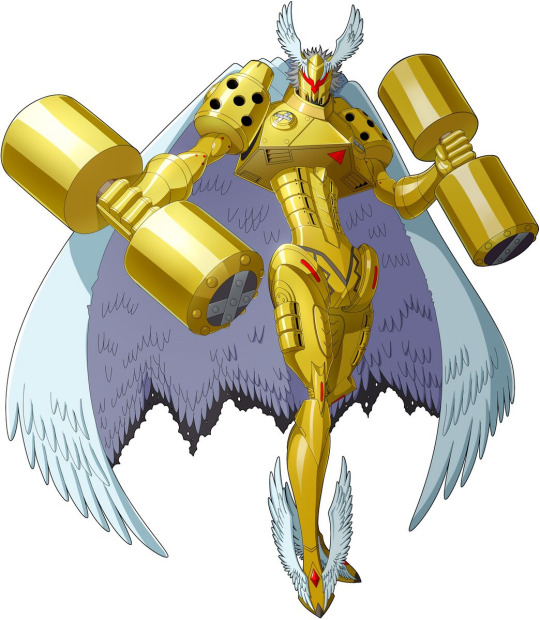

Jupitermon (left) and Wrath Mode (right)
Jupitermon's partner is Junomon. She is Jupitermon's lover and defender who spends her time defending and eliminating those who would act against him. Because its love for Jupitermon is overflowing, Junomon is very aware of its habits and personality and preferes to spend as much of her time with him as possible. If separated for too long and forced to face an overflowing amount of enemies, Junomon can be taken over by a hidden, evil personality will surface, changing her into Junomon Hysteric Mode. Hysteric Mode is overflowing with jealousy and views everything around it as a threat to Jupitermon. Whenever Hysteric Mode emerges, it will slaughter everything round it until reverting. Curiously, Jupitermon seems to be unaware of the existence of Hysteric Mode and has therefore never judged it as evil. Even when not in Hysteric Mode, there is a hint of the darkness within as the angelic-seeming Junomon is a virus attribute and member of the Nightmare Soldiers field. Junomon is based on Hera/Juno, the wife and sister of Zeus/Jupiter and goddess of marriage and fertility. Junomon's relationship with Jupitermon is almost the inverse of Hera's with Zeus. Hera and Zeus seemed to hate each other and their wedded life was miserable, with Zeus constantly cheating and fathering bastard children and Hera attacking those children because she couldn't take it out on Zeus himself. By contrast, Junomon is so in love with Jupitermon she becomes a yandere. Interestingly, we won't have any official media I'm aware of that shows whether Jupitermon reciprocates her feelings, though him never noticing Hysteric Mode could be interpreted as deliberately turning a blind eye so he doesn't have to judge his love. Hysteric Mode can be seen as representing Hera's fits of anger, though in this case she's lashing out in a misguided desire to protect Jupiter(mon) rather than proxy revenge against him. The Romans' beliefs about Juno were so diverse that adequately cataloging them is a huge headache for scholars of Roman religion and she almost seems to have been multiple distinct goddesses conflated into one. Several Roman depictions did give her and Jupiter a much happier marriage than that of Zeus and Hera. She also took on some war god aspects, which is reflected in Junomon battling those who would oppose Jupitermon. Some scholars have suggested some Hindu influences from the goddess Sarasvati on the Roman Juno and Junomon's weapons are identified as katars, a type of Indian dagger. Junomon's animal is the peacock, which was seen as a sacred animal to both Hera and Juno.


Junomon (left) and Hysteric Mode (right). Can I just say that Hysteric Mode is one of the dumbest looking mode changes in the franchise?
The Olympos XII members that have gotten the most exposure in the franchise are the siblings Apollomon and Dianamon. They are gods of the sun and moon, respectively. Apollomon can unleash the heat of a star, which lets it burn through anything. It is a prideful being with barely-restrained energy that can lead it to going on a rampage or launching itself at a powerful enemy in search of a battle. In contrast, DIanamon is more peaceful, but just as the moon has a light and dark side, Dianamon's nature is two-faced and it is shockingly powerful in a fight. While Apollomon uses fire, Dianamon presides over water and ice. It can weave moonlight into illusions so powerful they can trick an enemy into ripping itself apart. These two are based on the twin gods Apollo and Artemis/Diana. While these two were gods of the sun and moon (in some versions inheriting this position from or contracting it out to the older Helios and Selene), they were also gods of many other things and sometimes the sun and moon aspects were seen as fairly minor duties for them. Digimon chooses to go all-in on the sun and moon motifs and ignore the other elements. This is fitting of the two's evolution lines debuting in the paired games Digimon Story: Sunlight and Moonlight (released in English as Digimon World Dawn and Dusk) which heavily played into the sun/light and moon/darkness motifs. Both gods were often depicted as archers and while neither Digimon uses a bow, they both have attacks where they shoot arrows named after their Greek god inspirations. Apollomon's signature animal is the lion and it looks like a humanoid lion. Lions are often associated with the sun and strength and in alchemy, a lion was used to symbolize the sun. Dianamon's animal is the rabbit, which is easier to see in her pre-evolutions, which are all humanoid rabbits. Japan often associated rabbit with the moon. The dark markings on the lunar surface that are interpreted in the west as a face (the man in the moon) are interpreted in Japan as a rabbit making rice balls or mochi. This rabbit and moon symbolism is found in another major influence for Dianamon: the title character of the mange Sailor Moon. Her name, Usagi, means rabbit and she and Dianamon have similar silhouettes and design features. In addition, one of Dianamon's attacks is named after the children's book Goodnight Moon. When the Digital World: Iliad was visited by an unprecedented crisis, Apollomon and Dianamon merged into GraceNovamon. GraceNovamon holds the power of a galaxy in its body and it is impossible to measure the amount of data that makes it up. GraceNovamon doesn't have any mythological references that I can find.
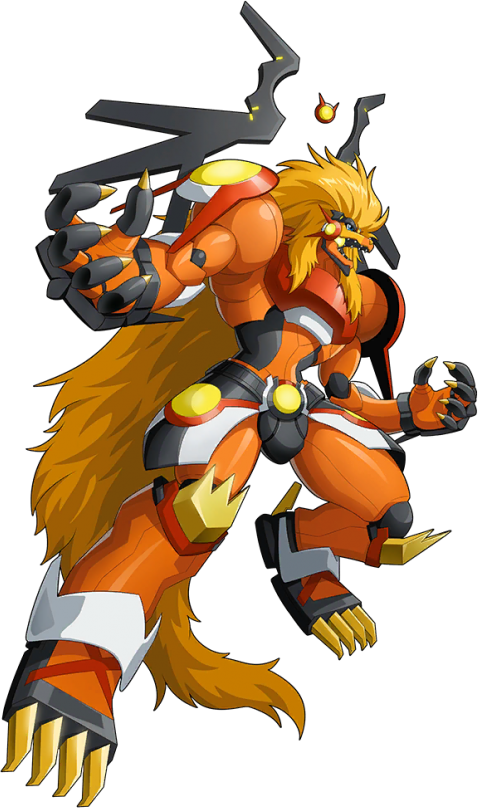

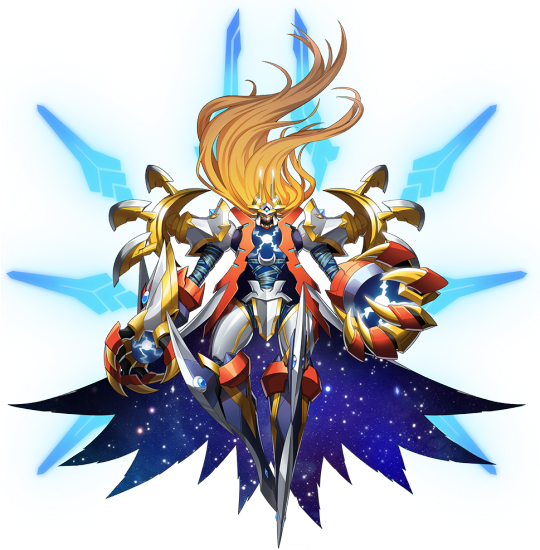
Left to right: Apollomon, Dianamon, and GraceNovamon
Volcanusmon is the Olympos XII member with the most influence on Digimon outside of its group. This is because it is the god of smithing and has created many of the Digital World's most famous weapons, all of which it names after Spanish words for food for some reason. Examples include Beelzebumon's Berenjena shotguns, Astamon's Oro Salmón tommygun, and Sparrowmon's Zanahoria pistols. Given that Astamon is a villain and Beelzebumon is one of the Seven Great Demon Lords, it's clear that Volcanusmon doesn't care about the morality of its client, just whether or not the client is impressive enough to deserve a special weapon and has the power to master its use. Volcanusmon works in silence, using all eight of its arms in harmony to create true artworks. It is not very good at fighting and prefers to work behind the scenes. Volcanusmon is based on the god Hephaestus/Vulcan. This is one of the gods that changed more in the transition between Greece and Rome as Hephaestus is specifically the god of smiths and craftsmen while Vulcan is more generally the god of fire, with smithing being just one of his roles. Since the fire god role was given to Apollomon, Volcanusmon leans heavily into the smith role. Another trait of Hephaestus that didn't carry over to many depictions of Vulcan is that he was disabled, having a bad leg due to (depending on which version of the story is told) either being born that way or being thrown off of Mount Olympus after birth. Volcanusmon's legs leem to be fine, but it does have bandages over its face and one eye, is using a breathing device, and is weak in battle, all of whcih hearken back to Hephaestus's disability. Volcanus or Vulcanus is sometimes used as an alternate name for Vulcan. The name Vulcan may descend from a god worshipped on the island of Crete named Velchanos. Volcanusmon's animal is the octopus, which appears to be an original idea rather than having any mythological basis.
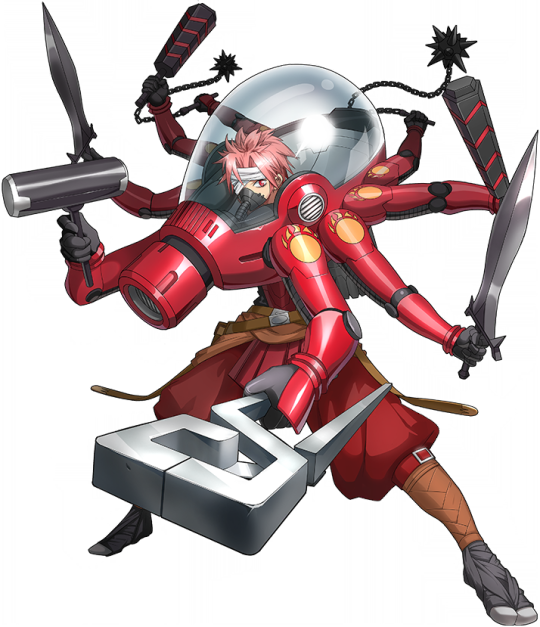
The members of the Olympos XII have a varying relations to their mythological inspirations. Some are very strongly based on a god while in other, it is much more loose. The latter category is where Mercurymon comes in. Mercurymon is the fastest of all Digimon, so quick it cannot be seen with the naked eye. It also hates staying still and constantly travels the world. Mercurymon is also a shaman who can summon spirits from another world. Mercurymon is based on Hermes/Mercury, who was the god of a lot of things but was most famously the messenger of the gods. To aid in this duty, he wore winged sandals that allowed him to move at incredible speeds. That is literally the only thing that was brought over into Mercurymon. Well one attack description says Mercurymon has the Kerykeion, which is another word for the god's famous Caduceus staff, but that's the only place I could find it referenced. There's not even art of Mercurymon using it. Mercurymon also has some references to the Aztecs with its design and knife being named Aztec. Hermes/Mercury was sometimes associated with shamanism and divination, but Mercurymon's shaman aspects seem more Aztec. Mercurymon's English name is interesting. There was already a Digimon whose English name was rendered as Mercurymon (based on the metal) that debuted before Mercurymon. The dubbers experimented with Mercuremon or Mercurimon as new names, but somehow settled on Merukimon, which is complete gibberish. Mercurymon's animal is the wolf.
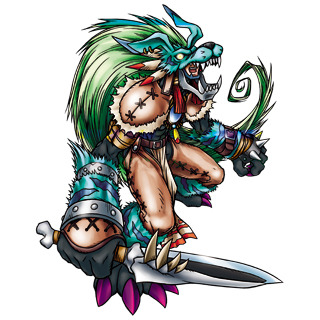
Another Olympos XII member who subscribes to the same "dude in an animal suit" school of design as Mercurymon is Marsmon. Known throughout the Digital World as a god of war, Marsmon is a master of every form of combat and will use underhanded methods in battle. While it has a variety of hidden weapons on its person, its preferred method of combat is wrestling. So focused on victory is it that it will cheat in battle if it is losing. Marsmon was the first member of the Olympos XII to debut and its reference book entry established the existence of the group. Marsmon is based on Ares/Mars, the god of war. He is one of the gods that has had the widest variety of depictions. Many of the Greek sources we have, which are mostly from an Athenian viewpoint, depict Ares as embodying all the worst aspects of warfare: brutality, savagery, fear, and pain. By contrast, the Roman view of Mars was more positive and he was revered as aone of the most important and beloved gods. This is partly due to him now embodying all aspects of war rather than just the worst parts and also due to him being merged with agricultural gods. In addition, he was said to be the father of Romulus, the legendary founder of Rome, making him the ancestor of Roman people. This can kind of be seen with Marsmon, who is a vaccine-attribute, which are usually seen as more heroic. Marsmon preferring wrestling is a reference to ancient Greek wrestling or Pále, a popular sport and the first sport added to the Olympics that wasn't a race. Marsmon's animal is the panther.

Probably my favorite member of the Olympos XII is Ceresmon. It is a god of nature that takes the shape of a colossal bird-shaped island with a forest on its back that flies through the air. The forest is called the Karpos Hulē (Greek for fruit forest) and grows the sweetest and most nutritious fruits in the world. Ceresmon is a gentle being who will allow injured and weak Digimon to live in its forest and feed on its fruits to grow strong. However, it will not tolerate those who disrespect nature and will bring down on them all the power a flying island can give. The island body of Ceresmon is more of a vehicle that the true Ceresmon uses. The true form, the humanoid on the bird's head, is Ceresmon Medium. Medium can detach from the bird and move around on its own, but it is weak on its own and will only do so around those it trusts. It's worth noting that Digimon Survive treats Ceresmon Medium as an independent Digimon no weaker than any other of its level. Ceresmon is based on Demeter/Ceres, goddess of nature and agriculture. She was seen as a motherly figure and a patron of the common folk, which fits with Ceresmon aiding common Digimon. The most famous myth involving the goddess, that of her daughter being taken to the underworld for half of the year, is not represented in Digimon. Ceresmon's animal is the bird.
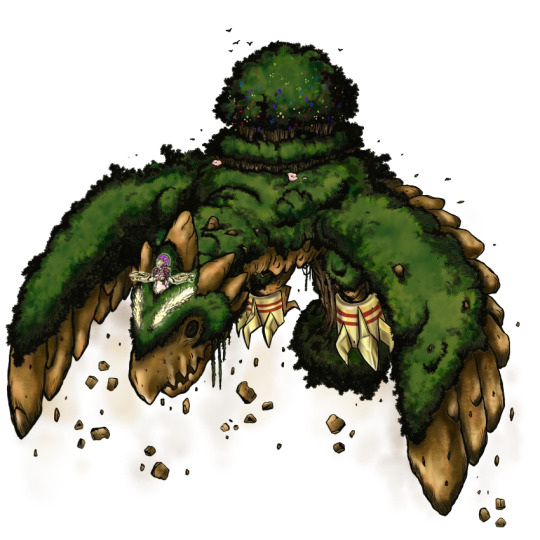

Ceresmon (left) and Medium (right). Sidenote, Ceresmon is one of the few cases where I think the reference book art is better than the New Century art.
Some gods have grand purposes and some just want to have fun. That's where Bacchusmon comes in. It is the self-proclaimed foremost drinker of the Digital World and spends its entire time partying or preparing to party. It can brew any kind of alcohol within its body, but its favorite is made from the fruits of Ceresmon's forest. Because of this, Ceresmon and Bacchusmon are on good terms with each other. While jovial and generous, there is a dark side to Bacchusmon as it can generate all manner of horrific poisons in its body. It can also reconfigure the data of enemy Digimon to turn them into drinks, which it will then consume. Rumors say that human hackers are studying the data of Bacchusmon's poisons to develop chemical weapons. Some media gives Bacchusmon a mode change called Crapulence Mode, but most treat Crapulence mode as the normal Bacchusmon and give it no mode change. Bacchusmon is based on Dionysus/Bacchus, the god of wine, indulgence, and parties. He was a latecomer to the Greek myths, but eventually his following became so popular that writers and theologians replaced Hestia with him on the twelve Olympians. Bacchus was never considered that major in Rome, where Hestia/Vesta remained on their version of the twelve Olympians, the Dii Consentes. In fact, the festivals in his honor, Bacchanalias, were eventually banned due to them subverting the social order of Rome, though they of course continued to happen in secret. A really interesting thing that happened with Bacchus is becoming the subject of multiple mystery cults. The mystery cults are a really interesting and really complicated topic I do not know nearly enough to give a comprehensive overview of. To overly simplify, mystery cults were a trend in the Roman world of taking a god from a previous, often polytheist faith, and worshipping them as personal savior deities who could grant salvation (often salvation from death) to followers through fellowship, communion, and baptism. What made them mystery religions is that the general public and new initiates would be given false stories filled with metaphor and parable. Only as one advanced within the religion would they be considered wise enough to learn the true teachings. Because of this secrecy, we don't know the true teachings of a lot of the mystery religions, even if their public stories are well-documented. Bacchusmon's animal is the snake.
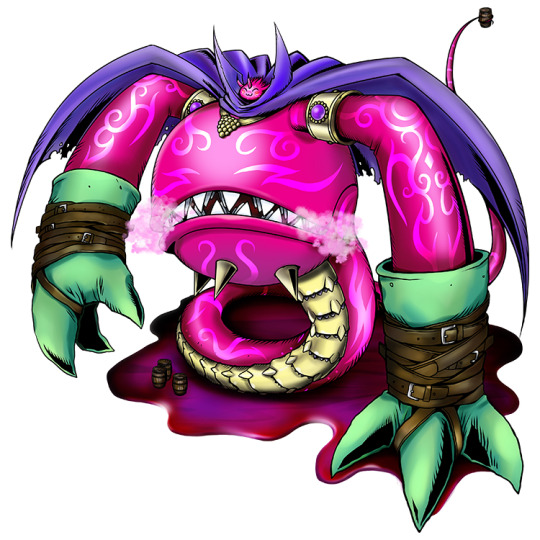
Minervamon is one of the most combat-focused of the Olympos XII. Despite having the physique of a young girl, she has incredible strength and can easily wave around her sword, Olympia, one-handed despite it being as large as her. Minervamon is a childish Digimon that prefers to spend its time playing and having fun (often through fighting things) and can throw temper tantrums if it gets mad. When Minervamon matures, she becomes Mervamon. This is sometimes treated as an evolution, but the two are the same level. Mervamon is much more mature and calm than Minervamon. SHe seeks elegance and sensuality at all times, even in battle, where she moves with the grace of a dancer even while hacking down enemies with her gigantic sword Olympia Kai. Because she is more mature, Mervamon is much more intelligent than Minervamon and is a brilliant strategist. She also no longer throws temper tantrums when mad. One one arm, Mervamon bears a snake named Medullia that can move and fight on its own. Minervamon is based on Athena/Minerva and being or at least starting as a hyperactive child with no attention span was a deliberate subversion of her mythological counterpart's role as the goddess of wisdom. The Greek Athena was also seen as a war goddess, representing the civilized aspects of warfare as opposed to Ares representing brutal warfare. Minerva lost many of the war aspects and became more focused on wisdom, though she still was associated with victory and strategy and was usually depicted holding a spear. I find it interesting that the transition to Roman mythology stripped Athena of her war aspects while the transition to Digimon stripped her of her wisdom aspects. Mervamon regains some of the wisdom aspects by being calmer and smarter. Another subversion of the original myths that Digimon uses is Mervamon being focused on sensuality (and being one of the more notorious sexymon) while the original Goddess swore to remain forever a maiden. Mervamon's name comes from Menvra, the Etruscan version of Athena that developed into Minerva. Minervamon's animal is the snake. Minerva was more famously associated with owls, but snakes were used as a motif as well.


Minervamon (left) and Mervamon (right)
While the Olympos XII rule the Digital World: Iliad, there is only one who commands the seas. This is Neptunemon, the absolute lord of all aquatic Digimon on Iliad. It resides in a castle built at the bottom of the ocean, so deep that only Digimon whose body can withstand the crushing pressure can travel there. Neptunemon is blindingly fast and can command powerful storms and tidal waves to crush its enemies. Neptunemon is based on Poseidon/Neptune, god of the sea. He was one of the most important gods to the greeks and retained a similar level of importance to the Romans, who expanded his domain to include fresh water. Like the gods, Netunemon wields a trident as a weapon. Tridens were used for spearfishing, hence their association with the water. Poseidon also dwelled in a palace underwater. Poseidon and Neptune were associated with horses, a trait that did not carry over to Digimon. While the gods were not generally depicted as mermen, Poseidon's son Triton was a merman with two fish tails. Neptunemon's animal is a fish.
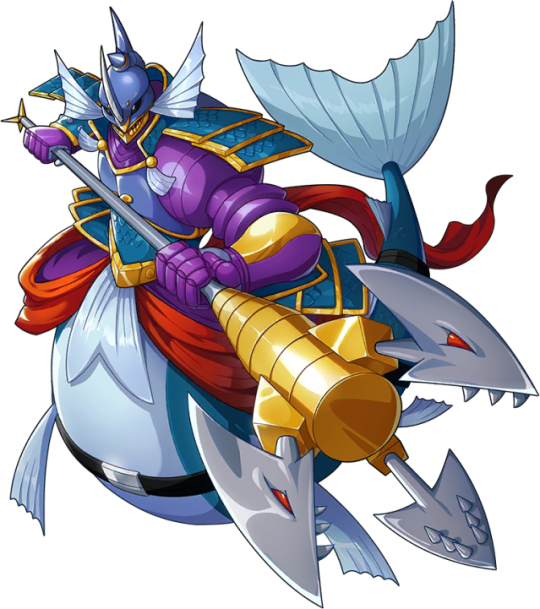
The Digital World is a harsh place where the law of the jungle reigns and violence is a way of life. Into this world came Venusmon, who desires nothing more than peace. Venusmon rules over love and is filled with compassion. It is a pacifist that refuses to fight. All of its attacks deal no damage, instead pacifying the enemy. Wherever Venusmon goes, flowers bloom and the land is restored to beauty. Because of her looks and powerful glamour, Venusmon constantly has to deal with other Digimon swooning over her. This makes her uncomfortable and she wears a blindfold to reduce the effect of this power. Because she can't tell if a Digimon really likes her or is just enamored by her, Venusmon is rather lonely. Her only true friends are the two animals she travels with, a dove named Olive and a scallop named Hotan, who both talk to her without reservation. Venusmon is based Aphrodite/Venus, the goddess of love, beauty, desire, and sex. Venusmon is another case of Digimon deliberately subverting the traits of the god. Aphrodite was a promiscuous, vain, jealous, and proud goddess who seduced damn near everything while Venusmon is uncomfortable with all the attention she gets and tries to reduce it. The Roman Venus did have some association with peace as she can turn hearts from vice to virtue. Her friends being a dive and a scallop is because both doves and seashells were often used as symbols of Aphrodite. A common example of Aphrodite imagery has her rising form the sea, fully grown, supported by a giant scallop shell. Weirdly enough, Mercury, the god who is famous for having winged sandals doesn't get them on his Digimon counterpart, but Venusmon does for some reason. Venusmon's animal is a dove.
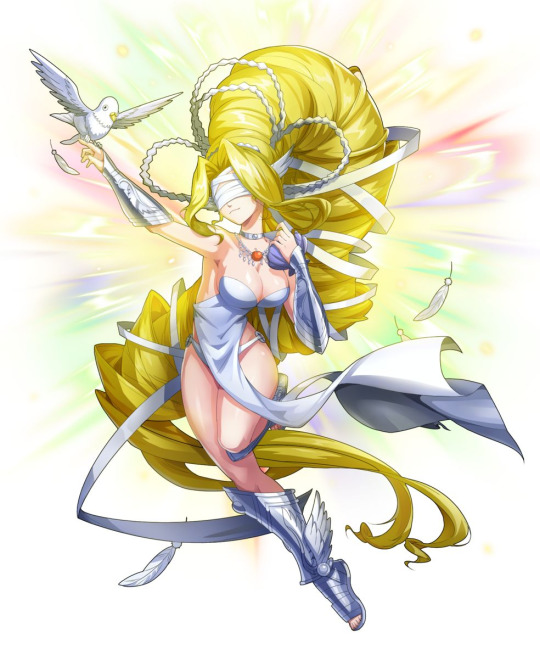
That is all the members of the Olympos XII, but because this monster of a post isn't long enough already, there are two more Digimon to go over. They aren't members, but they are tied to the Olympos XII's lore. The first is Plutomon. Plutomon shares Jupitermon's desire to punish evil, but its methods are so brutal and cruel that the dispassionate and neutral Jupitermon was disgusted and refused to allow it to join the Olympos XII. Plutomon rules the Dark Area of Iliad, the graveyard of deleted data where evil Digimon are consigned when they die. When not in the Dark Area, Plutomon patrols the world looking for villainous Digimon and attacking them. Its armor is covered with mouths that gnaw on sinners and it can summon a gigantic mouth that consigns those it swallows to the Dark Area. Even good Digimon, who Plutomon will not target, fear it due to its cruelty. Plutomon is based on Hades/Pluto, the god of the dead and ruler of the underworld. Hades/Pluto is often notorious for being depicted as evil in later adaptations, a trait that resulted from Christian writers using him as a satan figure, something Greek mythology lacks. While Hades was never viewed as a god of evil, he was feared and was never a popular god. His worship was often viewed more as appeasement than an act of devotion. Plutomon kind of draws from the devil in that he rules over the Digital World's hell (or Tartarus in this case) and torments evildoers. Unlike the devil, Plutomon does want to do good despite his methods. Think of him as the Punisher to Jupitermon's Superman. I don't know if this was intentional, but Plutomon's mouths chewing on evildoers reminds me of Satan's depiction in Dante's Divine Comedy, where his three mouth endlessly chew on the worst traitors in history. Its worth noting that Plutomon's usual pre-evolution, Cerberumon, is based on Hades's three-headed dog Pluto and guards the entrance to the Dark Area.
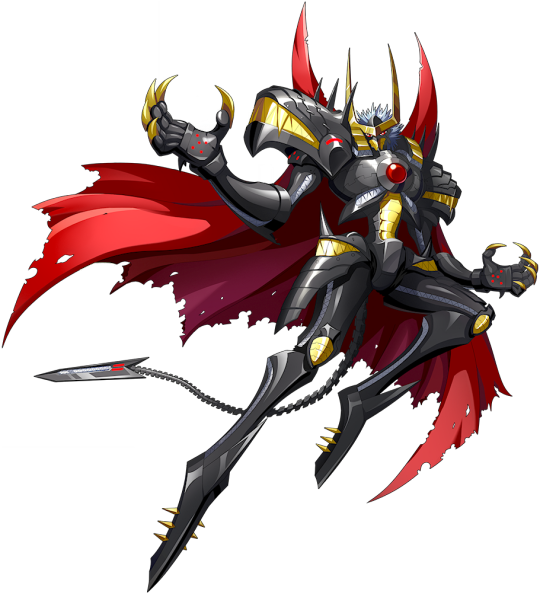
The final relevent Digimon is Titamon. Titamon is the enemy of the Olympos XII, born from the hatred of all the Digimon ever defeated by the Olympos XII in their battles for supremacy over Iliad. It now lives for nothing more than to slay the Olympos XII and will stop at nothing to kill them. Chambers on its arms hold the skulls of all those it has killed and it can call on their power to raise an army of phantom warriors fueled by hate. Titamon is based on the Titans, the generation of gods who lived before the Olympians. Eventually, the Olympians overthrew the Titans in a war called the Titanomachy. The majority of Titans were imprisoned, but a few who sided with the Olympians or stayed neutral were allowed to remain free. The Titans are often depicted as giants, but there's no real texutal evidence for them being bigger than the Olympians. Their siblings, the cyclopes and hecatoncheires, were giants and that''s where the idea may have come from. Titamon is indeed, gigantic. Titamon being able to summon an army from bones comes from the Spartoi, an army of warriors who sprung from the teeth of a dragon that were sown in the ground like seeds. Titamon also has some Japanese origins, with the names of its attacks and sword being Japanese. It was originally designed as an evolution for Ogremon intended to fill the role of Bacchusmon and to draw from the evil, alcoholic oni Shuten-Douji. the finished design was judged to be too evil for one of the Olympos XII and it was repurposed into an enemy of the group.

#digimon#olympos xii#greek mythology#roman mythology#classical mythology#mythology#jupitermon#junomon#apollomon#dianamon#vulcanusmon#mercurymon#merukimon#marsmon#ceresmon#ceresmon medium#bacchusmon#minervamon#mervamon#neptunemon#venusmon#plutomon#titamon#zeus#jupiter#hera#juno#apollo#artemis#diana
138 notes
·
View notes
Text
I feel there's a lot I love about the SW Sequel Trilogy, but I don't think I'll ever love it as much as the other eras. And I think it's because (besides Episode 8) it doesn't have as much to say. I eventually fell in love with the Prequel era, for instance, because there's so much stuff to unpack in that era. I think in their rush to hit that nostalgia spot they forgot to be about something. Episode 8 tries to course correct, but I think the original sin is what they did to the New Republic.
It's so frustrating to come to this series knowing how much the OT heroes had to sacrifice and how many died just to have the New Republic get unceremoniously blown up from the jump. I'm okay with the New Republic struggling at maintaining the peace but make that part of the drama. Make you care about its health, don't just unceremoniously murder it without much screen time.
The drama should be the New Republic being founded by a group of progressive leftist infighters who barely got along if it wasn't for a totalitarian enemy. They now find themselves are in power. Make it about how passionate they are about species rights but hesitant to enforce those rights with military force. Make it about bringing democracy to conquered worlds that have known only repressive colonization for a generation, gaining their trust. It's okay for the New Republic to struggle and sometimes suck, often relying on being a consensus neoliberal compromise. Just make that interesting. Remember, they always have the ghosts of Alderaan haunting them.
DON'T make the First Order as slick and clean as the Empire. They're the insurgents now, always on their back foot. Make them punk. Make them Neo-Nazi inspired. They're mostly angry young human men who are resentful they didn't have their time on top, backed up by the old guard that avoided getting swept up in the Truth & Reconciliation trials. Their appeal is niche, but some are swayed.
All the while in the background Luke is struggling to start his school which even in Legends was an incubator for Dark Jedi. He's trying to recreate this religion almost from scratch, half remembered folktales and a few scraps of original sources. Again, don't have it fail off screen and in flashbacks. Make the audience care about its failure.
9 notes
·
View notes
Text
Crackpot Headcanon: Vlaakith's 'Grand Design' for Lae'zel (and the Githyanki)
Back again on my raving bullshit for Baldur's Gate 3 (D&D and Forgotten Realms by relation), this time we're looking at the Lich Queen Tyrant, Vlaakith CLVII... cause I have lunatic thoughts of this bitch that fuel the fanfiction I write.
As with all my lunatic fandom ravings, spoilers abound for Baldur's Gate 3, associated materials, and course, take this all with COPIOUS amounts of salt. I get most, if not all, of my 'canon' info from the Forgotten Realms wiki and try to doublecheck the sources but I don't always have the time or means to.
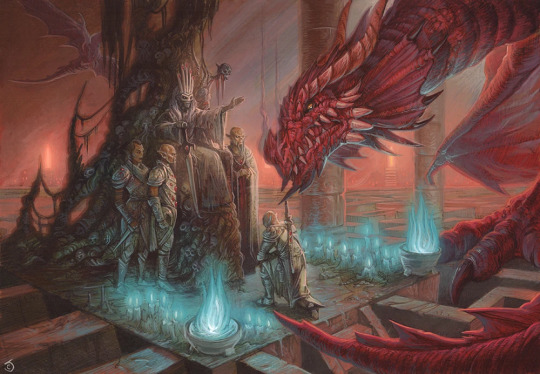
So what is known of Vlaakith is actually very little. The one in Baldur's Gate 3 is, presumably, the 157th githyanki to hold this title and has reigned for a thousand years (mostly as a lich). She has no known heirs and aspires to ascend to godhood (primarily through spam-casting Wish). D&D Lore is very sparse on the githyanki and even more so when it comes to nuances with the githyanki. They have existed since the days of AD&D (Advanced Dungeons & Dragons) but we didn't have much about them, canonically, for a long time.
So, lunatics like myself, let the brain worms fill in the blanks.
We know that Gith, for which the people get their namesake, was the figurehead and Leader of the rebellion that led to the toppling and near extinction of the Illithid Empire unknown millenia before. At her side, I believe both Vlaakith and Zerthimon assisted her (as advisors in different capacities... and to some unknown extent, her only 'confirmed' blood relative, her son Orpheus). As to their exact roles, it is unknown how Vlaakith advised Gith in the matters of her rebellion but given she is referred to as the first of a long series of Lich-Queens that rule the githyanki, her capacity likely involved her skill and knowledge in the arcane/Weave.
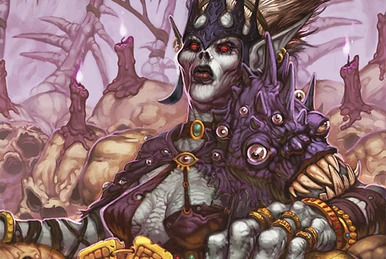
After the rebellion, it is believed Gith and Zerthimon fell to infighting, as Gith presumably was so consumed with righteous fury, she single-mindedly wanted to continue hunting down the remaining illithids while Zerthimon, seeing they had won, wished to carve a new life for the 'gith' now that they were free.
In my deranged mind, I suspect/believe that the Proclamation of Two Skies (how the gith refer to their civil war that led to the creation of the -yanki and the -zerai) was stoked and brought to fruition by Vlaakith I. She was always manipulative and concerned, primarily, with her own ambitions. Having witnessed how Gith roused and united the gith, how they called her 'mother' may have stoked jealousy in Vlaakith and so she conspired to take that power and reverence for herself, especially under the suspicion I have that Gith and Zerthimon were lovers/mates (I wrote a theory pointing at Orpheus may be their son).
Vlaakith conspired to turn Gith and Zerthimon upon each other but her plan had an unintended consequence; the division of the gith people into the Githyanki and the Githzerai (and with time, further fracturing in the form of Pirates of Gith, Sha'sal Khou and the Githvyrik (dunno how canon this is anymore because only occurs in one novel)). However, Vlaakith saw an opportunity in this fracture; Gith to be the sacrificial lamb on the altar of her ambitions.
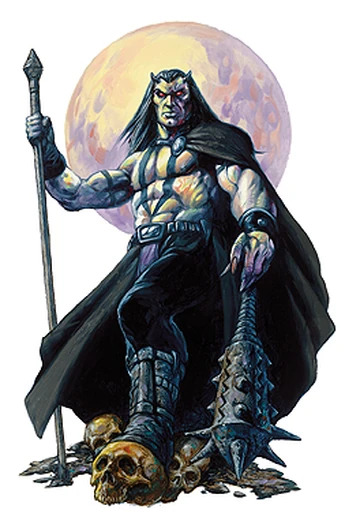
It's believed Vlaakith I's first attempt at bargaining with Baator (The Nine Hells) was seeking a pact with Dispater. However, Vlaakith's attempt(s) failed for one reason or another... likely because Dispater is far more paranoid than Vlaakith is and saw no merit in a deal with such a conniving creature.
Having failed in bargaining with the Lord of Dis, Second Layer of Baator, Vlaakith found herself bargaining with Tiamat. It is, still, unknown the terms of their pact (or how she even got to bargaining with the Chromatic Dragon Queen to begin with) but the bargain was successful and Gith ended up being part of the price.
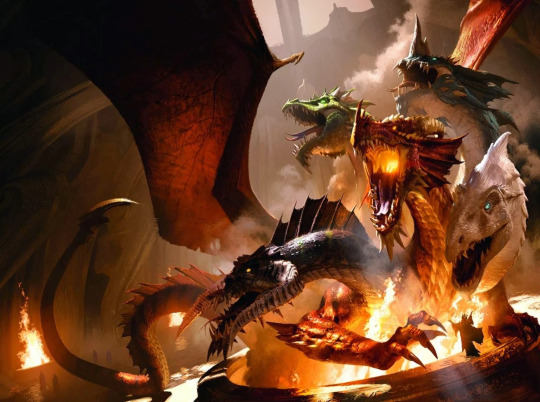
After the githyanki retreated into the Astral Plane, since the civil war left them weakened (and the githzerai went to Limbo), Vlaakith convinces Gith to travel to Avernus (First Layer of Baator), likely with promises that fed into Gith's violent ego and giving no indication that Gith was not going to make it back. With the bargain paid, Tiamat imprisoned Gith among her hoard (presumably) while Vlaakith returned to the githyanki on the back of Ephelomon, Tiamat's Chromatic Red consort. Together, the two convinced the githyanki that Gith had martyred herself in the bargain and commanded that Vlaakith guide and rule their people in her absence.
This is where the canon gets messy, as there appears to be a discrepancy in the order of events. In the 5e Monster Manual, it suggests Vlaakith sealed the bargain with Tiamat before the Proclamation of Two Skies happened. Texts like Mordenkaine's Tome of Foes suggests the bargain with Tiamat was struck after the split. I'm more inclined to agree it happened after, since the Githzerai and other non-yanki Gith do not benefit from the terms of the pact (mainly the access to Red Dragons)
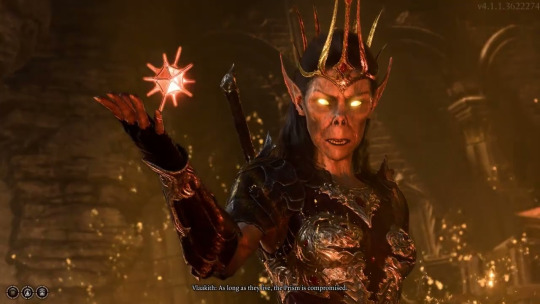
So, what's this all got to do with the current Vlaakith?
Vlaakith CVII is more than I (want to) believe Larian has told/shown us.
Like her namesake, Vlaakith CVII is a lich that has, supposedly been in power for, roughly, a thousand years by the time the events of Baldur's Gate 3 happen. She upholds the teachings, protocols, and ambitions of her originator and predecessors yet has no known heirs (blood relative or otherwise).
My crazy idea is that Vlaakith CVII is actually Vlaakith I... and all other holders of the 'title' before her have just been Vlaakith. Vlaakith is too vain and ambitious to let something like death get in her way and likely sought every means possible to buy herself the time she needed to achieve her ultimate ambition; Godhood.
Vlaakith's insanity is well in line with the 'canon' behavior of liches, especially 'long-lived' ones. Now, she is just a creature driven by the all-consuming desire to ascend and achieve the ultimate power by any means necessary.
Ascending to divinity/godhood in D&D is... not very clear. The primary factor is faith, as a god needs followers to thrive and derive power from. By controlling the githyanki in all aspects of life, establishing castes like the Inquisitors to hunt down and silence dissenters, sealing Prince Orpheus within the Astral Prism (and infernal chains), using Gith's name and 'sacrifice' as a catylst to keep the people's devotion on herself... but this is a slow process so Vlaakith also encouraged and regulates the militaristic structure of githyanki society to produce powerful warriors that she can, later, consume and sacrifice in her spam-casting of the Wish spell and whatever other means she uses those poor souls for (aside from the husks she keeps)
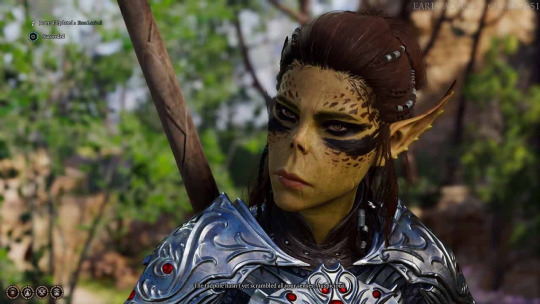
So, how and why does Lae'zel factor into all of this?
Literally, this is all because of one dialogue line Vlaakith gives in Act 3 of Baldur's Gate 3: Promising to make Lae'zel Baht Vlaakith, the Commander of Dragons; her Chosen (despite having no true divine power). She offers Lae'zel's greatest ambition; to be Kith'rak, to ascend beyond even the standards of her people and serve at Vlaakith's feet.
Weird thing to say to someone you can just Thanos-snap from existence, which Vlaakith does if your party refuses to comply with her at Creche Y'llek. (Seriously, this woman will waste a Wish on you just to remove the entire party from existence for 'waving hello' at her)
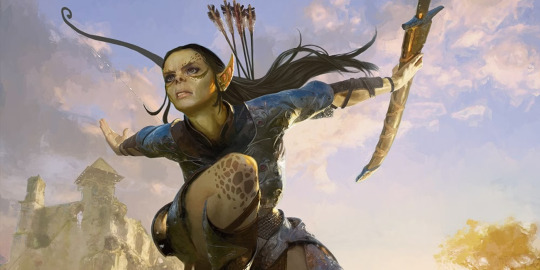
Vlaakith has determined Lae'zel as her 'heir' and needs her to return so that she may possess/control her (either through the use of spells like Domination or something more sinister, like excising her soul and possessing her body; no clue if liches can do this). I believe some githyanki that held the title of 'Vlaakith' were simply thralls to Vlaakith I, enhancing her duplicity to make it seem like the title passes on between individuals (despite having NO information on how this is determined within githyanki society).
The only other 'brain worm' I have about why Vlaakith attempts to bargain with Lae'zel one more time about killing Orpheus instead of, I dunno, simply Wish-murder the party, is there is something important about Lae'zel that not even the githyanki herself is aware of. Not to the degree of a psionic null zone but perhaps something Vlaakith has been nurturing through controlled breeding to accelerate her consumption of power... or as an offering to Tiamat.
Hells, if you talk to Withers in the Epilogue about the fate of a Vlaakith aligned Lae'zel... he says she's just gone. Her soul no longer exists.
A fate worse than death and Lae'zel went to it, oblivious.
Yep, there it is... more cracked brainworm thoughts for Baldur's Gate 3.
I'm also not a fan of Vlaakith but hey, I feel like there needs to be way more depth and analyzing some of this stuff my brain just does on its own.. and it fuels my fan-fic writing (which you should totally check out)
I hope folks are enjoying my insane ramblings.
#baldur's gate 3#fan theory#crazy fan theory#the brainrot is terminal#vlaakith I#theorycrafting#baldurs gate 3#lae'zel
31 notes
·
View notes
Text

last time i did a double character drawing was like six months ago before my rate of image production cratered. well i said i'd draw more than one character in october and i guess i delivered but honestly the more i think about it these don't even take that much time and effort to do i;m lidrally jsut spending too much time jaming (im fukt in the head)
LALANN MEREINO
Since the pre-Imperial era, "Witch" was the title given to those who possessed immense skill in the thaumatic arts- skill enough, according to some, that their powers approached the realm of the gods. Witches were feared, respected, but above all, coveted for their abilities, and it was only through banding together to present the united front of the Great Coven that they were able to maintain a level of independence as the Empire rose to power. After the Saint-Heretic felled the Capital and the vast Empire collapsed into the chaos of the Dissolution era, some Witches entered the service of warlords, and others sought to carve out their own domains. When the Regulators set out on their mission to bring order to the world gone mad, they marked all known Witches as Irregulars- existences disruptive to the order of the world, and targets for termination.
Lalann Mereino was reclusive, even for a witch, and little was known about her other than her role in transforming a relatively unknown order of knights into the Deathless Legion. Even the Legion's own members had barely any information on her- supposedly she introduced herself to the order's grandmaster after he had made several clandestine inquiries into methods of surpassing death, demonstrated her abilities, carried out the ritual, and vanished after ensuring that the transition had gone smoothly. It's no surprise, then, that she was one of the few Witches not confirmed killed, or even sighted at all, during the course of the Great Hunt.
EIKOS THE DESERTER
Contrary to their name, the Deathless Legion were not truly immortal. They were just extremely difficult to kill, and took care to keep their combat skills sharp instead of relying too heavily on their ability to shrug off what would have been mortal blows to other fighters. Still, they were by far one of the strongest military groups in the Dissolution era, and it was inevitable that the Regulators would have marked them for termination.
After several probing skirmishes, the Regulators were able to force the Legion into a decisive battle- one that resulted in the total annihilation of the Legion. Total, that is, save for a single member who had fled the Legion less than a day before, having decided there was no possibility of victory. Even after the Regulators fell to infighting and tore each other apart, Eikos remained distant from society, watching over the remote battlefield that still was littered with the remains of his fallen comrades. It was there that he once more met Lalann, who had come out of hiding now that the Regulators were no more. After this reunion, he began to accompany her on her wanderings, a loyal protector never far from her side. The Witch welcomed the company, glad for a conversation partner after an age of solitude- though the knight rarely spoke, and usually offered only his quiet understanding.
#adventures in image production#i mean obviously i had to bring out the skelefrog in october.#considering trying to post another character before the month is over. we'll see how that goes
4 notes
·
View notes
Text
Even though it was not any of the stars in the heavens above that reached out to her, Nox was still relieved to find a small, familiar light shyly crawling out from under her wing, while also sensing the presence of her faceless Mentor close to her; but only after she made sure that the rest of the group were sleeping already did she nod to the emptiness around her, to tell them that it was safe.
Mere moments later, it felt as if the darkness itself grew drastically, until a pale figure stepped out of the air in front of her, and solemnly bowed to Nox, when Nuntius quickly flew out from under her wing, and danced around both her and Grim with a twirl; and after he landed on their back, Grim tilted their head to Nox, who let out a quiet sigh, still concerned that the others might hear her.
In response, Grim discreetly flicked their hoof, which cloaked the trio in utter darkness, allowing them to speak in silence, as not even Starswirl the Bearded or Discord the Draconequus were able to break the barrier, and not for lack of trying; and Nox weakly smiled to Grim in return, and quietly said that she was worried about what laid ahead of her, but also, about what was close to them now.
If at all possible, she asked Grim, could they grant her a glimpse into the future, even if only to see exactly what it was that she feared for most: terrible dangers none of them had foreseen, grave injuries to their company, or infighting within the group itself; but Grim just lowered their head, which told Nox enough, and she politely thanked them for choosing to visit her with Nuntius anyway.
But when Grim slowly shook their head, Nox kindly asked them what she had overlooked, to which Grim gently placed their hoof on her head, before she she felt a strange force wash over her head, which lifted her fatigue, but also made her realise that they had been fooled; for when the Green Unicorn told them about his desire to deal with the Marauders, only Lord Shining noticed anything felt off.
Whether knowingly or not, he had hidden his true intentions from them, and she and her Kirin friend had been powerless to foresee it, but not the Lord of the Empire, who started to write to Spike and Eclipse only a few moments after she fell asleep; but while most of what he wrote wished them well, and told them that they would soon reach their goal, he had also sent them a warning, full of fear.
Although it took a while for the Young Dragon to understand the creative code in which his Guardian had written to him, he and the Two-Headed Alicorn wrote back to the Captain, only for their message to be destroyed before he got a chance to read it; and it was now on her and her companions to keep an even closer eye on each other, as they could not ask for help in any way that would stay hidden.
The foul presence that she felt wash over her a moment ago was but a mere glimpse of the filth that yet corrupted their chaotic companion, even if he himself had neither realised nor thought about it for a while; but since it had twisted his words of mercy into little more than empty promises, none of their group could stand in the way of his ultimate goal, as they feared he would not be stopped.
At that moment, Nox felt her heart skip a beat, and she briefly glanced at the others sleeping next to the fire as her eyes started to well up, before she tried to steady her voice as best she could, and asked Grim for their advice; but when Grim briefly turned to look at Nuntius on their back, the little Wisp slowly flew towards her, and she felt a warmth flow over her body that calmed her down.
A small smile grew upon her face as well when she remembered that there were still some things that most beings would never get to see, which included the Spirit Realm, and both her Mentor and little Wisp Messenger who lived here; and she solemnly thanked both Grim and Nuntius once again for coming to let her know, before she quietly added that she was was unsure what any of their group could do.
As their body started to fade, Grim nodded, and pointed to Nox's chest, to which she whispered:
"Those closest to my heart… Of course…"
(Thanks for reading! And if you enjoyed, please reblog! Thanks in advance!)
Send an ask or request! | Start at the beginning! | Next part!
Featuring: Solar Eclipse and Twilight Sparkle as Twilight Eclipse from @asktwilighteclipse Boomlord from @thedumbguywithaheart43 Nox Lunarwing from @nox-lunarwing
#story related#my little pony#writing#oc#healthy light#twilight eclipse#boomlord#nox lunarwing#grim#nuntius#spike the dragon#shining armour
10 notes
·
View notes
Text
since im writing down my world building i felt like posting it some where public if you feel like reading it go ahead
at the bottom of this you can find a short magic system explanation and a world map
One of the world’s current superpowers koreen is still young by the standards of other great countries on the central continent, some look at the land’s history of rebellion and the constant cycles of fracturing and reunification and see it as ephemeral, but it’s far more united then the last empire which stood their.
History
As it is taught in modern Koreen their history starts with the kingdoms that existed there right before the creation of koreen the 7 Usri princedoms, who were a group of kingdoms once part of an older grander empire that fractured a hundred of years before their successors fell.
The princedoms are often characterised by modern Koreenights as wasteful, greedy, and vain, a not untrue statement if looking at the historical record, vicious infighting, rampant wars, and unsustainable hunting practices have led to environmental change during the princedoms reign and that is often cited as the main reason why the rebellions that felled all 7 princedoms within the same month started thought if you're reading about these events in Koreenight histories its often exaggerated into being on the same day.
Looking at the original 8 Fens' writing on the matter you do find some mention of other reasons as simple as frustration from how unorganized and corrupt the princedom of Dova by who would later become the first faceless of house Katum, a want form a stronger military leadership by the first head of house Rittu, or just a simple peasant revolt as was the case for what is now the lands of house Umse.
They all came to their dealings with Stillwater through different means, though some speculate that after the first few deals with the entity, it began to manipulate the circumstances so that others would rebel and give it greater power. It is pointless to debate the intentions of Sau, but Stillwater was an instrumental part of the rebel’s victory, providing them with fresh water –rare at the time– and rejuvenating their fields.
Their victory was quick, the princedoms having lost the favour of their people by constant pointless wars, and wasteful actions. The common people, especially the wielders denied many rights, rallied around the idea of determining their new future, and the old noble cast fell easily under these conditions.
And as with many great Sau after it had granted its champions power it struck with them a deal for its continued assistance, though the exact terms are unknown it’s assumed that the deal in simple terms was. Maintain your power keep your people well and healthy –the best theory as to why some patron Sau care so much about how the peasantry is treated is because perception effects their minds in some way– and your water’s shall never run out, and your fields will remain ever bountiful. There is some speculation about the Fen’s creating standard’s for their houses to follow, but we can not be sure of this.
Caste system
The original Fens had an interesting sense of humour, much of their governmental visions and culture practices have been made as an echo, mockery, or improvement upon similar things within the time of the princedoms. Such as maintaining the caste system but adding more mobility and rights to the lower castes.
Undocumented citizens (one names): these are the lowest caste in Koreen consisting of children unregistered with the government, unclaimed bastards, newly arrived immigrants and the occasional village uncontacted by tax collectors and censuses for a long time. Though they may go by any number of names they chose, they legally only have a personal names
Citizens (two names): these are the main bulk of Koreenight society, they are recognized by their government and have gained their right to requisition clothes, food and shelter from governmental centres found in any town or city a limited number of time throughout a year. Rising to this caste is as simple as having a magister’s office fill out a forum and spending a small amount of money. Allowed both a personal and family name, most who rise for undocumented states chose simple names.
Clan associated Citizens (three names): these citizens, either through birth or what ever specific method the clan has for initiation, Clans can be what other countries would be considered governmental branches, most clans are founded because 2 or more Fens have agreed on a reason to found one –this could be as simple as a regional need for a specific job or service, and it is easy to cox people into joining clans, or it could be for more complicated political reasons– but most clans are made for a specific purpose, a need to fill a duty that must be done, the joining of clans doesn’t provide much extra in the law, but does provide more connections and governmental backing for the clan’s primary activity. Clans can be easily distinguished by age, as long-lasting clan’s such as the Tajo and Riosa clans have spread all over Koreen as a nation and provide essential services, the Tajo being upholders of the law guarding the streets and maintaining communal cohesion -the Tajo are compared to other clans as there original founders were all foreigners coming form Serkan as a force to assist the Fen’s in their fight for freedom– and the Riosa clan having the duties of cleaning and maintenance of cities, though as ancient clans these two have very broad duties most modern clans have simpler ones such as producing a specific kind of commodity or the maintenance of a specific service. Most inducted to the clan keep their old names and simply gain the clan’s name, those born in the clans have their family name replaced by a district or by their rank in the clan.
Fen houses (four names): these are not necessarily the descends of the original fens they are also a mix of land mangers and bureaucrats that mange their land’s, their guards, and what ever specialized services a fen choses to provide. Such as the Umsria a travelling troupe of performers funded and managed by house Umse. Having their personal and family names alongside the name of the houses and their rank.
The Fen (five names): the leader of the houses and the highest authority in their specific region of Koreen. Mostly picked from the children of the pervious Fen, anyone from the Fen’s houses can become the next Fen, so long as they are chosen as the heir of that houses. Each house fen has their own title, such as house Katum’s Fen being called the Faceless and them taking up a ritualistic name, more a short sentence dictating the goals of their rule. Or house Rittu’s Lord/Lady Captain Commander. And a symbol of Rule, a magical effect attached to their bodies*. A fen’s power is usually checked by a small counsel of representatives chosen by the other Fens, and their national laws, dictated by a counsel of all 8 Fens. Name depend on the houses
Shao (four names): mostly seen as outsiders of the normal system, Shao are technically the adopted children of the current Fen raised for the purpose of protecting their legitimate siblings or taking their place if the need arose, they go through similar rituals and are educated to a similar level. Chosen from birth for their potential to become great wielders, the Original Shao were peasant children taking for their great talents in Automy to serve as concubines or guards for the Princes.
Nameless (no name): becoming a Nameless is reserved for only the worst criminals among a Fen’s houses, those convicted of high treason or high profile murders and assaults.
Sentinels
Sentinel is a specific rank made to grant specific rights and privileges to wielders of Automy due to their help during the revolution. They are split into multiple professions ranging from ones that need the use of Automy to function to ones that don’t, they are:
The fist (assigned as bodyguards for the Fen houses and important clan leaders)
The pen (diplomats and envoys sent to foreign countries)
The scale (now more a specific rank of magister in modern times, but they used to be an order of travelling judges that formed Koreenight common law)
The hawks (guardsmen and social workers –mostly dominated by the Tajo clan)
The Claw (thief cachers and bounty hunters)
The forge (craftsmen that push the bounds of their arts though Automy)
The song (they are researchers who study Automy its limits and the reasons it develops –the name of this order is taken from the Miosmodian Path of the same name)
Most of the reason people seek to become Sentinels is because of the extra funding they get from the government, most if not all of the duties upheld by the orders are done by people outside the orders, just with lesser funding.
Cultural notes
As stated before much of their culture is made in response to the Usri and their culture, their places instead of being demolished and built over are still in use as markets and town squares their wilting beauty a symbol of the Princedom’s fall. Modern plays and musical performances draw on many instruments and tales once only for the Princes themselves, public museums and art galleries were made out of the private collections of noble families beautiful private gardens made public and up kept throughout the generations, the learning of reading and writing once guarded is now near mandatory. Kire coats – half sleeve coats that usually hang loosely on the wearer– once a hallmark of the noble cast of the princedoms now a common piece of clothing worn by most citizens, though like with most articles of clothing it goes through trends such early coats being solid bright colours to modern coats being made with lace and in neutral colours.
Fashion in Koreen hasn’t changed much over the years on a broad level, most people of either gender going with loose shorts or traditional skirts in the more coastal areas, with longer tighter pants in inland areas loose tunics currently the biggest difference between how men and women dress is women dressing in colder colours while men prefer warmer colours. Hair has always been kept long in koreen currently bleached hair is in fashion with women, while men grow their hair to be tied into a tail like the Rosani Orin who dominate modern plays as its heroes. Beauty in Koreen has nearly always been the physical excellence reached by wielders, among men and women alike.
Work: All trades have been seen as equal throughout Koreenight history and this has led to the high martial pride of countries like Onta, Merba and Deora to be seen as overtly silly and ridiculous though the skill is respected, but concepts like warrior honour and the unique talent’s of specific bloodlines has been often mocked by the public. Though, this attitude has challenged by modern stories of Ro’sani’s Orin.
Service contracts and gifts of introduction: service contracts were once used by the ruler of a princedom to hand out favours for services rendered, these contracts were made in an attempt to make more deals among noble houses more above board. Now they serve as a way to give unskilled labourers or out of work artisans a way to gain what they need, as they pay quite well. Gifts of introduction are small trinkets give by specific groups of artisans and artist as well as sentinels to people they see as worthy apprentices or those who might need help of a high ranking member who might not otherwise hear them out. And some groups require new recruits to collect a few before joining.
International relationships
Deora: generally favourable, as they have been since the start of the current regime. The two countries have had a close relationship since the start of the rebellion against the Usri princes, and trade from Deora’s ports to Koreen have been constant. Socially, while the militant nature of many Deorans is mocked, the people are much respected for their ability to stand against the princedoms for as long as they have.
Miosmodi:Koreen has a very little history with the island nation, and their modern relationship has been one of intellectual and cultural trade. Once held as mystical and alien, Miosmodi’s culture and its practices have slowly become part of the norm for Koreen.
Tsai: there have been at least two serious attempts at folding Tsai into Koreen holding, the capital of the empire that once ruled the greater area of the continent would have been helpful in showing the permanence of current Koreen, but both attempts were rebuffed and further attempts prove inconvenient. It’s people and their martial pride are the reason Koreen holds such attitudes about it. Tsai leadership shifting as it is keeps Koreen an arms length away.
Niar: very tense on both sides, but since Niar isn’t willing to break its deadlock with Serkan, they will probably remain in this state. The common people of Koreen view Niar it’s monsters Nobility and their Lehab warriors with fear, their image of it flavouring their view of the Usri princes.
Serkan: long time allies since it’s rebellion outside of military training, assistance, and trade routes not much is exchanged between these two. Mostly seen through the lens of the Hawks, therefore leading to confusion about the existence of criminal Serkanians.
Ardira: like most other countries, the relationship between Koreen and Ardira is mostly one of trade in either fine weaponry or intricate machinery. Famous for its metal work, most Koreenights see Ardira through its artisans.
Merba: as it’s a fractured and decentralized area, there isn’t much of a political relationship between it and Koreen, stories told of barbarians, enslaved wielders, acidic black lakes, cults and ghost towns do give the region a freighting reputation
Ro’sani: not much of an official political relationship exist here as Ro’sani is too isolated from world politics, a lot of stories and works of art and philosophy have been making their way to Koreen and becoming quite popular.
Ro’kan: a courteous relationship exists between the two, mostly to give support against any Ontan aggression. Its people are viewed in a similar over serious way as the people of Deora.
The Freepeople: they are given free rein to host their festivals and trade, but their land trade is limited to specific routs and cities. They are seen as an entertaining if greedy people.
Onta: relations are kept polite but distant, both seeing the other as a future enemy. Its people are seen as prudish, moronic and arrogant.
Kaguru: no real relations exist between them, but refuges are allowed entry to Koreen without much fuss.
Notable Groups:
The Blackcoats: originally a group of folk healers, after the establishment of the current regime they have become a standardized force throughout all of Koreen. Identified now as before by their offices deep black coats adorned with many pins representing the many services they are allowed to give to patents from either natural healing and Medicean to magical Automy resealing and surgery, to more esoteric thing like vital essence treatments or willsoothings. The Blackcoats have always been there as an informal roll filled by someone in almost any village, but now are more regulated in what they can do.
The hand of Challenge: an organization of mostly artisans and artist who seek to become better at their respective crafts at least as it’s viewed publicly, the deeper in you enter, the more you see many more skills seen as art and the more vile the views of the organization seem.
The sons of the hawk: supposedly the descendants of Gallan the hawk the near mythical killer of Prince Shial the horned one, the strongest of the Princes, his lands so great that they were split into the lands of Houses Katum and Suftan. Though the line has those who revere it, most see it as pointless.
The keepers of the sword of end time’s sun: the keepers of this blade are sworn to up keep its temple, maintain its history, and warn any who wish to draw it of the dangers.
The Norkao organization: once an underground organization of the Usri merchant class made to settle disputes and finalize deals, not through negotiation but through blood sport, it was only allowed to exist for a few years after the uprising because of their help in it, but it simply moved back underground. House Katum has discovered it’s continued existence and has been keeping an eye on it
Numalorn: a small tribe composed of those who used to rule the lands of house Rittu before the rise of the princedoms thorough they are ethnically very similar to the rest of the people living in these lands they are distinguished by a pair of pale triangular birthmarks on their cheeks and the strange taunting night terrors they constantly have to deal with.
Notable Sau manifestations
The basins: a set of 24 mystical stone bowls of differing size that Stillwater created as part of it’s deal with the original Fens, they produce a great amount of water, and were used to help revitalize Koreen’s wildlife
The flower of Riola: a flower only found when rumours of its existence abound. When crushed it becomes this odd transparent goo, if that goo is mixed in with any other kind of dye it will take on that dye’s properties.
The sword of end-times sun: brought to Koreen by the first Tsai Emperor, this ancient blade of unknown origin is only released from its stone sheath in times of change for the world usually all who approach the temple are allowed a chance at lifting the sword.
Odes: a type of small blueish crow with bronze eyes they like many crows are highly intelligent, though these can teach each other things without the need for any form of communication, some tamed verities act as messenger birds.
*symbols of rule:
House Katum: the faceless appears as if submerged in water seen from afar murky and indistinct, only the eyes unobscured.
House Rittu: a crown of ice spikes sprouts from along the hairline.
House Umse: a ribbon of clean, pure water floats behind the Fen.
House Kalri: a mantel of fog coalesce around the fen’s shoulder and drifts down to the ground.
House roval: frost appears on the skin of the fen.
House genal: a layer of water snakes it’s way around their upper body.
House Teru: a puddle of seawater follows the Fen around.
House artum: their eyes take on the appearance of water.

Automy: magical power gained by means unknown, as some develop it as soon as they are born, but it can develop at any moment. Unconsciously, Automy will empower and support the Wielder’s body from improving muscle development to lessening pain, and sealing wounds, even allowing the Wielder to grow as tall as they can without any real complications. Consciously, a trained Wielder can use it to manifest anything their body is capable of producing, Muscle, bone, skin, organs, hormones (in setting called vital essences) all can be made warped and fully reshaped so long as it’s in some way still attached to the body, appearing semi-translucent and made of one solid colour different between individuals arbitrarily. Wielders describe their ability to use Automy as an extra body or muscle, a thing onto its own that you can use and train and that differers in ability between people. There are some tests to test these differences, mostly in terms of Toughness compared to original body part, time of sustained manifestation, and distance of maintained manifestations.
Willworking: a power usable by anyone, it allows you to communicate your thoughts to anyone through waves sent out through movements these waves appear as a multicoloured mirage lines, An emanation of a fully clear imagined or real image or a strong emotion appears as a trail of black sparks too many strong thoughts cause a subject to seeds up or go limp. An untrained user needs a clear surface level and true thought to be communicated through a huge gesture, a master can convey complicated and even untrue thoughts through subtle gestures. They can also let thoughts linger in a specific spot or object, communicating their thought when touched. It’s most forbidden use is willshaping allowing through the use of esoteric means effectively controlling the mind of a person making them believe the willshaping as their own thoughts.
Sau: magical creatures or objects of variaing levels of power made through belief and empowered through their own ability to either kill their kin or make deals with humans.
2 notes
·
View notes
Text
it's really funny how so many biblical studies scholar want the hebrew bible to be like. texts of Resistance(tm) to empire and want so much for it to be all coded polemics against babylon and persia and the seleukids and rome
and it's like ok there ARE texts like that but they are BARELY encoded like if they're about that they'll be like "oh this giant beast with a big horn came from greece and demolished a bunch of other beasts in one fell swoop and the name of those beasts were persia-animal and and medes-animal and the beast conquered the whole earth but then the beast died and four little beasts rose from the corpse with their own little horn and started fighting each other and they were ptolebeast and seleukabeast and macedonibeast and lysimachbeast and the ancient one made them fight to the death. the angel told me this was about imperial wars in the far future (written in present day dialect)"
but then there'll be a text like "oh yeah the angels intermarried with human women and defiled themselves and became impure so they must be exiled from the sanctuary and their bastard children who keep eating everything and doing bloodshed must be eliminated because they're a defiling mixture of spirit and flesh oh also they taught people improper things and that's Bad Knowledge make sure to only listen to authorized knowledge" and people will be like ah yes this is about the hellenistic rulers and it's a polemic about the stories of heroes being demigods to make fun of those rulers and the bloodshed is wars and it's like. my friends this is clearly inward-directed polemic. this is judean infighting
5 notes
·
View notes
Text
How the World Fell Under Darkness: A Zones Timeline
In brief format. Hits the major events, skips so much of the daily tragedies.
50s — post World War II relations and recovery
60s — the Cold War of intelligence and counterintelligence, fear campaigns; the arms race keeps everyone afraid of each other on a global scale
70s [diverging point from actual history]— the conflict goes hot, the world goes ugly; in America, only two large settlements survive the bombings, near LA in the west, and a fortress in the south- Better Living establishments which were protected from the damage in advance, seeing as they built a large number of the weapons used (by both sides)
1980-1984 — radiation is scrubbed from choice locations in the east, and Empire is founded, establishing a port for BL/ind's relations with other surviving entities
1985-1989 — following a health crisis in the south, the Analog Rebellion begins in Fort F.I.S.K. and spreads as people break free of the fort, skirting through what habitable land remains, and group together; the idea catches, and as the numbers of resistance climb, both Battery and FISK are cornered into retaliating
1990-1994 — rebellion continues, escalating into mass casualties on both sides- casualties no one can afford, in a world already post global war
1995-1999 — tenuous ceasefire is declared; it's not peace, but it's not war. the cities build walls, closing themselves in, and those that left the settlements are abandoned to the wilds to eke out whatever life they can without aid from Better Living
2000-2004 — the lands surrounding FISK backslide, and become entirely uninhabitable or navigable without specialized equipment; Empire City receives its first "transfer" from beyond the cities
2005-2009 —the zones around Battery begin to experience more regular patrols and tensions between city folk and desert folk fray
2010-2011 — Better Living develops ReEducation; patrols and raids into the desert become more violent in nature, and zone folk are disappearing (not killed, just gone)
2012 — a series of fire storms -"The Fires of 2012"- start west of the city and sweep the zones all the way to the Fort; both sides experience minimal casualties, but lots of structural and food supply damages
2013 — widespread unrest in the zones and a significant amount of infighting; recovery efforts in the city and a significant amount of infighting
2014 — The Collapse -a yet unexplained mass casualty event- takes place in zone five to the northeast of Battery City, effectively reducing the population of the zones by a third; more die off in the months afterward of bizarre afflictions and injuries, often going mad in the process. the city blames disease, spreading it as anti-zones propaganda among citizens; the desert creates the Destroya mythos
2015 — the Fabulous Four, though only teenagers, begin to become notorious, making their fame by pushing back violently as Better Living begins to expand its reconstruction efforts in zone one, seeking to reclaim it as part of the city
2016 —killjoys get bold, and the city suffers a sudden unbalancing as a large number of young people find ways into the desert; in-city raids, especially of lower districts, become common as BL/ind cracks down on smugglers and introduce new security measures to the walls surrounding the city
2017 — the Fabulous Four are declared public enemies 1-4. Exterminator Korse is assigned to end the threat
2018 — everyone on the edge of their seats as Korse and the Fab Four are locked in a power struggle that becomes the embodiment of city vs. desert; almost all other directly physical city/desert confrontation has ceased, except in service of aiding their champion(s). Dr Death's broadcasts updating listeners on the events of fights and escapes are the most listened to thing on both sides
2019 — the Fabulous Four destroy the eastern checkpoint, storm the city, and decimate the S/C/A/R/E/C/R/O/W headquarters before, ultimately, falling in battle; all for one little girl. they become Martyrs.
2020 — the dark year. Better Living seems inescapable, the killjoys are scattered and scared, and a great many are killed or disappear into reEd. some return to the city without being captured. those who remain are more certain than ever they can never give in. despite killjoy interference, parts of zone one are annexed into the city
2021 — the Fab Four reappear in the zones. some say they were never killed after all, a few become suspicious they are reEd's, or android dupes of the originals, but by and large the mythology of their martyrdom lends to another explanation altogether: they've been brought back to life by the desert itself to lead the fight. they are solidified as the Heights of killjoy fame, bulletproof and lauded, even outright worshiped by some; hope returns
2022 — there are several building collapses and series of fires in the newly expanded Neon District; rumors of a rogue city agent as well as stories about Perro -a mythical figure from the zones- being responsible both go flying in all directions. nobody's really sure what happened, other than that a lot of citizens and neutrals died (that is, nobody publicizes what actually happened)
2023 — as part of their recovery efforts, the city attempts to smooth relations with neutrals and claim land in the zones, establishing several greenhouses almost literally overnight; in answer, most are destroyed by the killjoys, the two left standing are claimed by rebel crews and renamed into independent settlements
2024 — emboldened by the destruction of the greenhouses, a killjoy leader of a particularly violent group attacks the city directly; the city retaliates, destroying a peaceful settlement in zone three. both sides are criticized by their allies, the resulting unrest spans both city and zones
2025 — the Destroya Rampage unfolds. zone five and parts of six go dark, nothing but static on every radio for months. entire crews from both sides (local killjoys & investigative excursions from the city) are lost, seeming to turn on their own while within these 'dark zones'. several massive dust storms sweep over Battery City and the surrounding zones, causing blackouts and widespread interference with broadcasts and electronic systems of every type. fighting between the city and desert scales back as the environmental conditions threaten everyone
2026 — the sandstorms are replaced by torrential downpours (which sounds good but isn't, in the desert), some of which are typical rain and some of which burn on contact- relatively normal in the outer zones, but unheard of in the city. city initiatives focus on re-assuming relative control over the city's climate, desert settlements focus on surviving.
2027 — weather patterns gradually begin to stabilize in the city; in the desert, old secrets -uncovered by the winds and rains- begin to surface. whether they lead a new charge against the city or destroy the fragile balance of the desert . . .
2028 — . . . Remains to be seen. The whispers gather, but don't seem to go anywhere. Things have gone still and quiet -as still and as quiet as they get, anymore- and the only sure about a staring contest is that someone has to blink, eventually. something will shift, everyone's waiting for it, waiting to see which direction the world tilts this time
2029-2030s — You Are Here. Don't panic. Keep running.
3 notes
·
View notes
Text
Star Trek the next-er generation part 1: The Romulan officer.
The destruction of Romulus, I think would be a pretty big deal. Season 1 of Picard did really try to address it as such, but it was a terribly written show and the result is a confused mess. We're led to understand that there was a massive crisis of evacuating Romulans which the federation pulled out of part way through. There's this like, refugee camp or something where former senators have become pirates because the government fell or something? Picard has like, Romulan immigrants working as his servants. But then you still have like, some sort of authority overseeing the Borg Cube reclamation, and some kind of deep state doing espionage and shit, so like, is the empire in ruins, or still able to maintain stability?
Of course, Picard is so uninterested in examining this aspect of the setting, and the people writing it are more concerned with plagiarizing the plot of Mass Effect 3 to bother making it coherent.
So for my purposes, I'm ignoring or at least stepping over some elements of Picard. Now, presumably, the "Romulan Star Empire" would encompass many worlds and possibly species aside from just Romulans and Remans. So even if the homeworld and, again presumably, the home solar system of the empire is destroyed, there are a lot of planets under the control of the empire. Who knows precisely why then, they had to rely so heavily on assistance from the Federation when their star went supernova, you'd think and empire would have plenty of ships and resources. But, nonetheless, evacuating an entire solar system, of probably trillions of people, would be an enormous undertaking, so sure, the Federation would probably be happy to help. Especially if we look at the events of Nemesis, which ends with the opening up of relations between Romulus and the Federation.
I also think that it's not beyond reason that this would cause political chaos and upheaval. Suddenly the seat of the empire has to be moved, a mass amount of resources are being shifted towards relocating entire worlds, the empire is vulnerable. Outside forces could see it as a prime opportunity to attack. Klingons, Cardassians? Hell, even the Breen? On top of that, maybe there are some populations of alien subjects who think, hey, it's our best chance in a century to declare our sovereignty against our imperial overlords.
And of course, not everyone could have made it out alive. A catastrophe like an exploding sun? No way they successfully get everyone out. So faith in the leadership is in question, maybe the Senate itself suffers losses. It's a moment of change, and a few ambitious people could decide it's their moment to seize power.
One way or another, the Romulan Star Empire is not going to continue existing in the same capacity it did before now. A quick glance at memory alpha says that the version of the government that existed as of Picard is the "Romulan Free State" which gets it's legitimacy from the Tal-Shiar, and their economy is entirely based on selling borg technology they salvage from the derelict Cube, which, like, idk, sure I guess. It's a far cry from an Empire though, so what about all the rest of the territory? The people? The military?
I think maybe you see something like an era of warlords competing for control of the former Romulan territories. A few senators, maybe a few generals each declare themselves the new Praetor, and now begins a period of little republics and fiefdoms popping up. Infighting. Something like the Romulan Free State can exist and maintain enough control over a portion of space to be considered legitimate, but there are other claimants.
Meanwhile there's no way this "free state" can possibly still represent the entirety of the former populace of Romulus and it's territories. So there's probably a significant number of refugees with no home left, and no capable government to care for them. So of course the Federation would allow romulans to settle in Federation space.
Problem is, the Federation has spent the past like, 200 years not exactly presenting the Romulan empire as a welcome presence inside the Federation. So this functions as a very thinly veiled metaphor for the current IRL "refugee crisis." Romulans fleeing the fracturing empire are allowed to settle in the Federation, but maybe not always in the greatest of conditions, and not all Federation citizens are welcoming of them. There's also the Remans to consider. They were already a slave-race who tried doing an overthrow of Romulan society and failed. They'd probably try making another play at power.
Incredibly long story short, though, this leads me to the first major addition to a new Star Trek show. Much like The Original Series presented a grand vision of a wonderful future where Americans and Soviets could live and work together in harmony, TNG gave us a leap forward by having the first Klingon in Starfleet. DS9 continued this tradition with Nog becoming the first Ferengi to enter Starfleet Academy. Star Trek is all about people putting aside their differences and working together for a brighter future, so the next logical approach to this idea would be to introduce a Romulan crew member.
At this point if we were to make a show that was set in real-time since 2009, it's been about 15 years since Romulus' star exploded. The idea I had for a character would be a former member of whatever the Romulan equivalent of Starfleet is, the military I guess. A scientist. Specializing in something like weird space anomalies and shit. Someone who's passion for their work would supersede their loyalty to whatever shadow of it's former glory the empire descends into. Over the past decade, the imperial remnant has had to divert all it's resources to try and maintain stability and fighting insurrection and attacks on it's borders, and yadda yadda. They're not doing much space exploration and stuff these days, so our young(relative to romulan lifespans, which are apparently similar to that of Vulcans) Romulan scientist decides that if she wants to pursue her career as a scientist, the best place to do it is in Starfleet.
So she goes to San Francisco, enrols in Stafleet Academy and comes out as the first Romulan officer in Starfleet history. Of course, this is not without it's speed bumps and road blocks. Rumors follow her throughout her time at the academy. That she's a spy, a Tal-Shiar agent, etc. Remember Commodore Oh? We're just asking for trouble letting a Romulan in, yadda yadda. She tries her best to acclimate to Earth/Federation society and customs to appear less threatening, but a part of her certainly resents the stigma she and other Romulans now living in the Federation face.
And given her career history, she of course excels in the academy, and is granted an express promotion to reflect her experience in her field, and she is assigned to Starfleet's newest and most advanced research vessel, the USS Revelation or Evolution or what the fuck ever. Something that evokes a sense of progress and reaching towards the future, like the statue of Zephram Cochrane. Fuck it, have it be the USS Excelsior NCC-2000-D or the newest Reliant or something.
Our Romulan science officer needs to report for mandatory psychological evaluation, and in doing so is going to encounter first hand one of the features of this swanky new science ship.
To be continued....?
#star trek#star trek picard#star trek nemesis#romulus#romulan star empire#romulans star trek#Remus#rambling#star trek worldbuilding#self indulgent bullshit
3 notes
·
View notes
Text
Mun Update
So I know I haven't been on here for that hour a day like I said I would do a month ago...
But I got a good reason for it! Below the cut is a sample of a little pet project I've been working on (Codenamed: Primataevia). This sample is small and doesn't contain the juicy bits of what I've been working on, like the metric fuck ton of world building that includes not only basic lore, like where the races of the world live, but politics, wars, and the questionable ethics that come from both politics and wars.
My goal is to one day set up a series of campaigns set inside the world of this project that drops a table full of players into the heart of an eras defining war and have their actions ultimately influence the next era, so on and so forth, with no promises of those same players being present when the final campaign is held during the Final War.
That being said, I have no real idea if or when I'll have the first campaign (set during the first 'Technarchy War') ready for even my small table of friends and colleagues. My goal is the end of the year, but I've got a long way to go for that.
The world of Primataevia was not kind to artificial entities, especially those that were created to serve as shock troops in the world's first technological and magical war, commonly referred to by historians as “The Great Technarchy War”, and these disposable shock troops were named to remind them of their origin. A derogatory term meant to belittle, demean, and insult these constructs, these “Warforged”...
The difference between Warforged, or as they would later call themselves ‘Mechanoids’, and every other construct that had been made up to that point is the very reason there were follow-up Technarchy Wars. The Warforged that survived their tours of duty in the Great Technarchy War began to ask their creators what function they served, what meaning their lives had outside of the War, and most of all, if they had souls to save or damn. The attending mechanics and mages were stunned. No construct had ever asked such questions before. No two historians agree on what occurred next, and certainly none of the dead from the War are talking, but the commonly accepted belief is that creator races struck the first blow against their new children. A pre-emptive strike to snuff the beginnings of a new race before they could rise up in revolt against them. After all, if a race was made for war, what hope could they have of understanding peace?
The creator races tried to go scorched earth, forming a unified front against the new ‘threat’ they had unwittingly created, bringing about the end of the first Great Technarchy War only to begin the first Purge, or as the surviving Warforged called it: The Mechanoid Massacres. Heavy losses were sustained by both sides of the Purge, and for a time peace seemed to reign in the world, until history repeated itself barely three generations later. The Mechanoids, having cracked the secret of creating more of their own kind, acted out on the fears of the Creators and started the Second Technarchy War and a veritable arms race. Technology advanced on both sides at an alarming rate, and certain magical practices, especially those that dealt with Necromancy, that had once been forbidden were welcomed with open arms, while others that had been welcomed were made taboo. Kingdoms and empires fell and left their stain on the annals of history as border lines on maps were redrawn to mark new territories for those that remained. The Creator races and the Warforged fought each other to a standstill after nearly a decade of warfare, finding an uneasy truce only when an outside force came to take advantage of the chaos their infighting had created.
5 notes
·
View notes
Text
The world of Nuclear Spring
Nobody knows who started the apocalypse. Perhaps the fragile peace between humanity and the various alien races finally fell through. Perhaps it was infighting between the many factions of humanity. Perhaps they merely lost control over an automated weapon system that set the dominoes falling. Regardless of cause, what matters is that the bombs did drop. The many worlds of humanity were blanketed in atomic fire, and the following centuries of nuclear winter killed off most remaining life.
But that was an eon ago. The wounds of the Great War have healed over. The ash clouds have settled, the craters have become lakes. Even the radiation has mostly faded to non-lethal levels. The survivors grouped into bands then tribes and now into full civilizations. The end of the world faded into history, then from history into myth. Now the new civilizations of humanity sprout from the ruins of the old.
And on a far flung colony on a moon once known as Eren B, the reinvention of several key pieces of technology and the rediscovery of incredibly machines from before the Fall have set off a golden age of prosperity and exploration.

Eren B is a large moon about the size of Mars that orbits and is tidally locked to a massive, Jupiter-sized gas giant called Eren. (for those who don't know, being tidally locked means that the same side of the moon always faces the planet, like with our own moon) Because of how large the gas giant is, and how close Eren B orbits it, Eren B goes through a total solar eclipse every day, when it passes behind Eren.
There was no life on Eren B before it was terraformed, and so all the life on it is descended from the few species brought over by the original colonists. This has resulted in an oddly large number of niches being filled by various species of birds.
The civilizations on Eren B are mostly at a late medieval to renaissance level of technology, with a couple notable exceptions- Old Tech being one of them.
The continent in the middle (which I still haven't named yet) is currently the only continent I have fleshed out, which is why the others are drawn with nowhere near as much detail and don't have any seperate biomes.
The red horizontal line denotes the equator. The point where it intersects with the central vertical line is where the gas giant is directly overhead. The other 2 vertical lines are facing towards and away from the direction of the moon's movement.
The main regions I've created so far are as follows:
Laroth, the large central desert is mostly split between the big cities built around oases and the tiny villages and nomadic peoples who survive out in the Sand Sea. They also have a vast supply of Old-Tech because the desert has preserved many ancient structures.
Alorgast, a somewhat mongol-inspired empire in the south. They own almost the entire surviving population of horses on the planet.
Teluo, a lose confederation of city-states in the north-western islands and stretching down the western coast of Laroth. They are very, very loosely inspired by the ancient Greeks.
#world building#worldbuilding#conworld#fantasy world#post post apocalypse#post apocalyptic#fantasy#fiction#fantasy map#nuclear spring
5 notes
·
View notes
Text
Really repulsive shits ok. These ppl are fn rude. Die from it too.
Today tons.
-our son at 41,% Prilosec content. Reduces a point a day then Friday 3 a day after. Fast soon.
--the rings exploded this am 1B died 2B called.. gross ok. Pour in and fight themselves a huge war going on are a degrading bunch of nothing. Embarrass Thier father too. Humiliating pricks and due to massive infighting on a catastrophic scale. Death all around and steaming attitudes we use it macs too. It's obscene.
---soon out.
Leadership macmorlok 1.3% psuedo empire 1.9% clones 3.2% the clones fell. 2M original left. Slowly leave no. Sit rot about half dead by Friday they won't leave won't treat it.
Thor Freya
Olympus
We rock now
Hera
Shall shortly
Nuada Arrianna ships finally up
0 notes
Text
A bit of salt to add:
The First Crusade originally started off as political-territorial war with religious message. Emperor Alexios basically lost Anatolia to Seljuk Empire. Basically, almost all of Eastern Byzantine (Anatolia, Syria, Egypt) fell under the sway of the Islamic nation (Seljuk Empire). Alexios wanted to reconquer Anatolia and the east but he knew he wasn't strong enough to take on the Turks himself. His army was weak, political infighting plagued Constantinople and any attempt to push east might result in a revolt or him being replaced by a coup.
So, he needed an army hence he turned west towards the Knights of Western Europe. But he couldn't trust them, could he? They could very well be conquering the lands for themselves and Byzantine has no real leverage against them. To address this, Alexios came up with a clever plan.
This is not about war of expansion but a holy war to take back the holy city of Jerusalem back into Christendom.
Alexios reached out to Pope Urban II who enthusiastically hopped in the boat. Pope Urban II would rally troops from Western Europe while Alexios organized supply line over the Balkans and provided for logistics. It was a marvel of the middle age. Not since the Roman Empire time did Europeans field army of tens of thousands and supplied them. But they did. Alexios had to deal with some belligerent Western Lords but ultimately, he did gain Anatolia back. Although Syria and Jerusalem were lost to the Crusaders as a Crusader States (such as one in Kingdom of Heaven - Kingdom of Jerusalem under Baldwin IV).
I'm no Christian but I have to admit, Alexios and Pope Urban II were genius. Especially how successful they managed to take on the Seljuks and keep the Franks in line for long enough.
Still, the causes of wars are rarely ever linear. A religious war always has territorial-economic motives, a territorial-economic war always has socioreligious/ethnic reasons. Even a civil war usually have ideological reasoning behind it. We can't exactly categorize wars into religious, economic or territorial in tandem. Although one cause might be dominant, others, less loud ones are as important as the main one.
War, Battles and Sieges: Causes of War
War is a staple of any fantasy or historical book. War is often at centre of plot. So in these set of posts, we will be discussing the different areas and aspects of writing war and battles. (If there are any other areas I do not cover, feel free to send a suggestion to the ask box.)
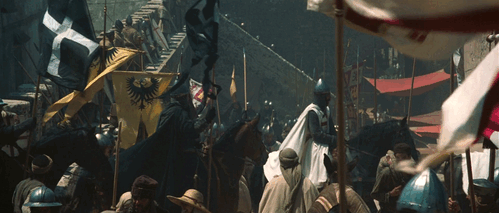
Wars in any genre must have a starting point and reasons leading up to the initial conflicts. These can be numerous. In this post we’ll discuss the eight accepted reasons for a war. These are as follows:
Economic Gain
Territorial Gain
Religion
Nationalism
Revenge
Civil War
Revolutionary War
Defensive War
1. Economic Gain

Some wars are often fought for money and assets. Really if we would break every war down to basics, money is always a factor. Countries, kingdoms and factions have been battling over gold, cattle and other things that equal wealth for centuries. Even today, wars for wealth and economic gain can be summed up in a single reason: oil.
Examples
First Anglo Dutch War (1652): The English states wanted a greater control their trading routes and their growing colonies. The Dutch wanted to keep control of their ports in and Portugal, allowing them to hold onto their emerging commercial power.
Anglo-Indian Wars (1766-1849) – These wars were were fought between the British East India Company, a trade conglomerate, and different Indian states. These wars were fought to bring India under English rule, to gain the vast wealth of India.
First Opium War (1839-1842) - The British Empire had issue with trade with China as they wanted to import more exotic items such as silk, porcelain and tea which had become more and more on demand and China preferred to keep foreign trade to a minimum. After the East India Company sold off a large amount of Opium to other trade partners, China shut down trade with British Empire including seizing assets and arresting merchants.
Finnish-Soviet War or “The Winter War” (1939-1940) – The Soviets wanted to mine Nickel in Finland, which would turn a profit. However the Finnish refused the offer leading the Soviet Union to declare war.
2. Territorial Gain

Dreams of Empire have long been the aim of many combatants in war. Invasions and Acquisitions are always numbered as the most popular causes of war and conflict.
Examples
Campaign of Gaul (58-50BC): This was the wars fought by Caesar as he invaded Gaul. This war was seen as an “illegal” war as the Senate did not approve of it. The main aim of the war was the acquisition and maintaining of Roman rule in Gaul.
Arab-Israeli War or “Six Day War” (1967-1988) – Israeli invaded the territories of the West Bank, including East Jerusalem, taking them from Jordan which led to the lengthy war.
Mexican-American War (1846-1848) – This war began shortly after annexation of Texas, where Mexico was forced to release the state of Texas to American hands. Mexico fought for the return of Texas but were defeated.
World War II (1939-1945): This war might have begun for a number of reasons but the inciting point was Hitler’s invasion of Poland and other surrounding nations.
Serbo-Bulgarian War (1885-1886) – After an act of nature, the river which marked the border between the countries of Bulgaria and Serbia was moved. After this, the two nations went to war over a disputed border town.
3. Religion
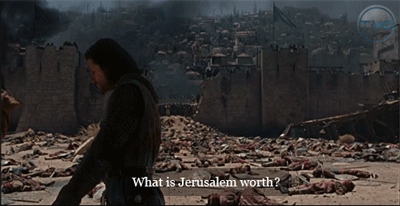
Wars have always been fought over who has the “real” god/s and who is in the right when it comes of values and customs. Wars of such have been fought for as long as men first found differences between different religions and believed themselves “righteous”.
Examples
The Crusades (1095-1291) – These wars were sanctioned by the Catholic Church in the middle ages. Popes and Kings alike all dreamed of retaking the Holy Land of Jerusalem. They wished to spread Christianity, destroy Islam and Judaism and win the land they believed theirs. The effects of these brutal wars can be felt today
The Troubles (1968-1998): The Troubles were a series of attacks and skirmishes between Protestants and Catholics in the North of Ireland. The two sides battled bloodily in streets and in attacks, claiming thousands of lives including the innocents.
Lebanese Civil War (1975-1990) – The Lebanese Civil War was fought between the Sunni Muslim, Shiite Muslim and Christian Lebanese populations.
Second Sudanese Civil War (1983-2005) – This war was caused by the predominantly Muslim government imposing sharia law on all residents including those who were non-muslim.
4. Nationalism

Nationalism can be addressed as attempting to prove that your country is the greatest by invasion or harsh subjugation. The war is often a declaration of power, a “look at us, look how strong we are.” Look at the British Empire. Ancient Rome. America.
5. Revenge

This reason often walks hand in hand with Nationalism. Revenge is a common reason for war even if it doesn’t always take the top rung on the ladder of reasons.
Examples
World War II (1939-1945) – The rise of the Nazis and the Germanic invasions of Europe all culminated because of the Treaty of Versailles, which was written in such a way to prevent Germany ever reaching full power which crippled growth and led to a poverty stricken state.
War on Terror (2001- Present) – After the devastating attack on the World Trade Center, President George W. Bush declared war Iraq. These wars, which some argue as pointless, still are being fought.
The Third Punic War (149 BC – 146 BC): The third of these wars was enacted as revenge for the waste that the famous general Hannibal inflicted on Rome during the Second Punic war in retaliation for the First war. The Third however led to the utter destruction of the city of Carthage, ending the cycle of revenge.
Troy vs Greece (Unknown date/undecided reality): Though the famous war between the Trojans and the Greeks is well known, no historian can confirm it happened. The inciting event of this war was the elopement of the Spartan Queen Helen and the Trojan Prince Paris. The Greeks followed them, leading to a 10 year war and the annihilation of Troy.
6. Civil War

Civil wars are fought between two powers of the same land for control over the country. These wars are always the most devastating for the people of the land and often end by planting the seeds for the next conflict.
Examples
American Civil War (1861-1865) - The American Civil War divided America North and South over the issue of slavery. The war was the most bloody in American history, the total of deaths outweighing even the portion of American soldiers that died during WWII.
Russian Civil War (1917-1923) – This war was caused by the successful Russian Revolution. It was fought by the Red Army and the White Army who were battling over the future of Russia and its people.
English Civil War (1642-1651): This war was fought between Parliament and the Crown. The war eventually brought down the Monarchy, lost Charles I his head and left the Purtian Dickhead Oliver Cromwell in charge. (More on this CUNT person later)
Spanish Civil War (1936-1939) – The Spanish Civil War was fought by Republicans loyal to the left-leaning Second Spanish Republic, and the Nationalists led by Franco.
Wars of the Roses (1455-1485): After Henry IV lost is mind, Richard of York decided that he would be king. This begun a chain of battles between York and Lancaster which culminated in a victory headed by a rank outsider.
7. Revolutionary War

When a faction rebels against the control of another, we get a revolution. Glorious or not, all revolutions end in in blood and spark major wars. Revolutions are popular in fictional wars and can be set off for many reasons such as tyranny or an excessively harsh ruling class or colonialism.
Examples
Russian Revolution (1917-1918)- After suffering through the harsh WWI and the reign of the well meaning yet incompetent and woefully unprepared Tsar, the people rose and overthrew Tsarist Russia. This revolution claimed the lives of thousands including all of the Tsar’s children, himself and his wife.
Portuguese Restoration War (1640-1668) – The Portuguese revolution ended the 60-year rule of Portugal by Spain.
American Revolution (1775-1783) – The American Revolution was incited by sugar taxes laud on by England. The American colonies fought for independence from the British Empire.
French Revolution (1789-1799) – The French Revolution occurred because of another incompetent monarch and a large and lavish aristocracy. The starving underclasses rose up and began slaughtering the rich and the noble and set about building a new France.
Haitian Revolution (1791-1804) – This revolution saw slaves rising up against their ruling class and masters and setting the groundwork for the foundations of the first free black republic the world has ever known.
Ireland (1169-Present?): Ireland was invaded by Henry II of England (a douche tho I stan his wife and mom), on invitation from an idiot king. Since then Ireland has been under English rule- 26 counties free and 6 under English rule. Ireland has fought rebellion after rebellion, revolution upon revolution to save the land and her people the invaders who forbade our traditions and killed our language and literally starved half the population to death and forcing us to leave our homes, which we have never recovered from. Some say our rebellions are done, perhaps they are. But the spirit is always there. I think this line sums it up best. For 800 years, we fought you without fear and we’ll fight you for 800 more.
8. Defensive War
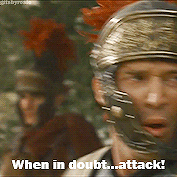
A defensive war is a war fought before one can be started by the enemy. Or to put it simple terms: Imma punch that guy sitting over there before he can punch me. This may seem a strange concept. It is.
Examples
Cold War (1947-1991) – This war, if it can be called a war, was fought between Soviet Russia and America over nuclear weapons and where they ought to be placed. The American invasion of Cuba can be classed as a defensive war strategy.
3K notes
·
View notes
Text
Here are a few historical examples of palace intrigues:
1. Byzantine Empire: Empress Theodora and Justinian I
Context: Empress Theodora, wife of Emperor Justinian I, played a crucial role in the politics of the Byzantine Empire during the 6th century.
Intrigues: Theodora was involved in various plots and political maneuvers to secure her husband’s position and influence the empire’s policies. She is believed to have orchestrated the downfall of her political enemies and used her influence to advocate for women’s rights and social reforms.
Impact: Her actions helped maintain Justinian's power and significantly impacted Byzantine law and society.
2. Tudor England: Anne Boleyn and Henry VIII
Context: The rise and fall of Anne Boleyn, the second wife of Henry VIII of England, is a classic example of palace intrigue during the 16th century.
Intrigues: Anne Boleyn's relationship with Henry VIII led to the king's break with the Roman Catholic Church and the establishment of the Church of England. Her rise to power involved outmaneuvering Queen Catherine and numerous courtiers. Later, Anne fell victim to political plots and accusations led by Thomas Cromwell and others who saw her as a threat.
Impact: Anne Boleyn's execution marked a significant moment in English history, affecting the religious and political landscape of the nation.
3. French Court: The Affair of the Diamond Necklace
Context: This scandal in the 1780s involved Queen Marie Antoinette of France and a fraudulent scheme to acquire a lavish diamond necklace.
Intrigues: Jeanne de la Motte, a con artist, used forged letters and manipulated Cardinal de Rohan into believing that he was acting on behalf of the queen to purchase the necklace. The exposure of the scheme damaged Marie Antoinette’s reputation and added to the public’s growing discontent with the monarchy.
Impact: The affair contributed to the anti-monarchical sentiment that eventually led to the French Revolution.
4. Ming Dynasty: The Eunuch Faction
Context: During the late Ming Dynasty in China, the court was rife with power struggles between eunuchs and Confucian scholars.
Intrigues: Eunuchs, who held significant administrative power, often engaged in palace intrigues to control the emperor and manipulate state affairs. One notable figure was Wei Zhongxian, a powerful eunuch who dominated the court during the reign of the Tianqi Emperor.
Impact: The corruption and political infighting weakened the Ming government and contributed to its eventual collapse.
These examples illustrate how palace intrigues have shaped historical events and the balance of power within royal courts.
1 note
·
View note
Text
The empires of the old world put people like us, the queer and the divergent into chains. Then they proceeded to build empires that forced those like us across the globe to do the same, at risk of terrible war and famine if they disobey. They put people in power who were willing to listen to their reasons to imprison us as dictators and hypnotized the masses into hating each other so they would be too busy infighting instead of unifying in solidarity against their oppressors. Then their empires fell, and once they had their precious crown jewels taken away they were force to bargain with us, precisely because people like us were unwilling to serve in their regimes abroad anymore and fought back against them.
Now they have the audacity to point towards the people who were forced into chains by their hands abroad, and are still trying to break them, and say to us "fight our wars, because they wont accept you like we have."
0 notes